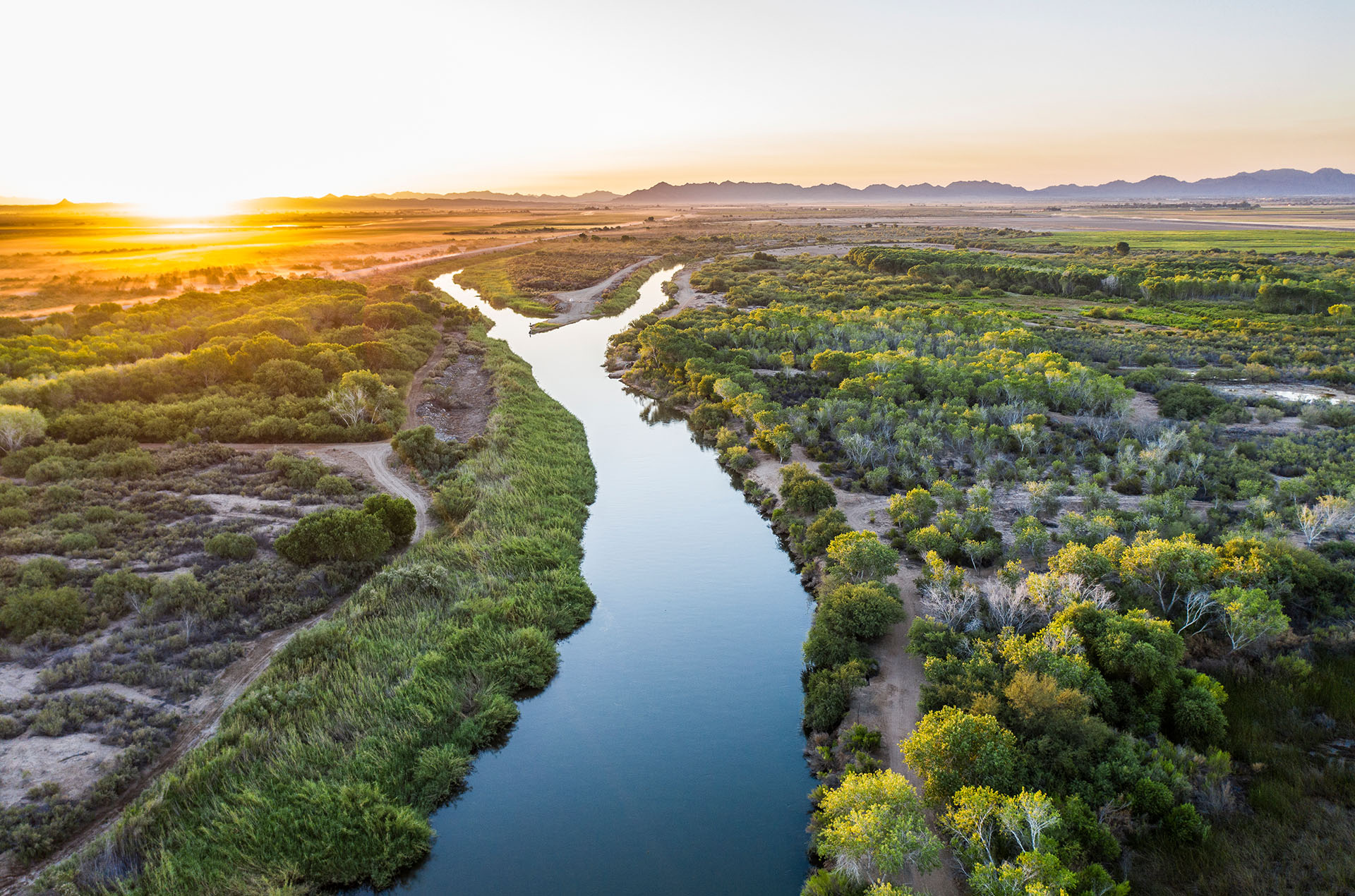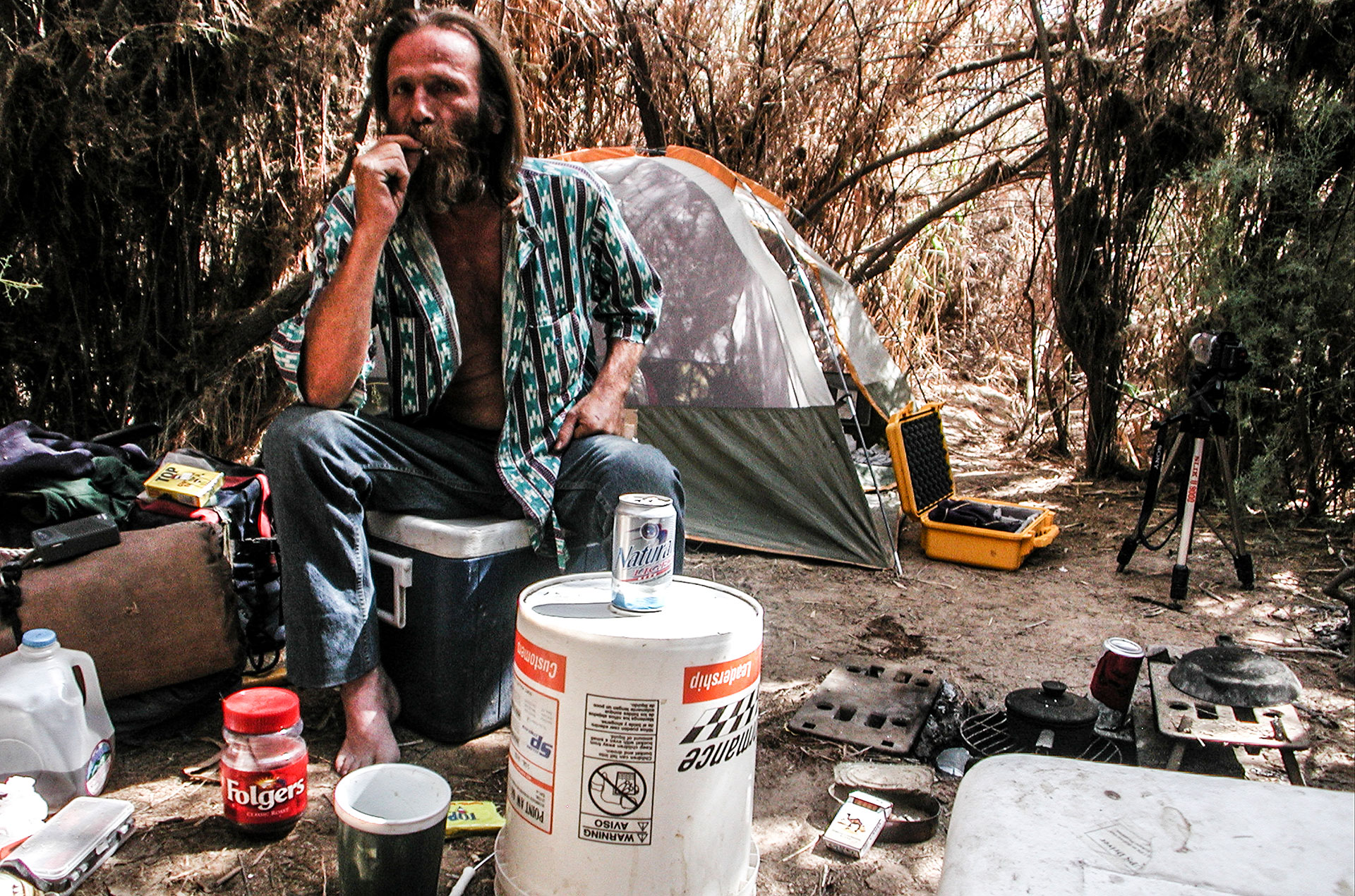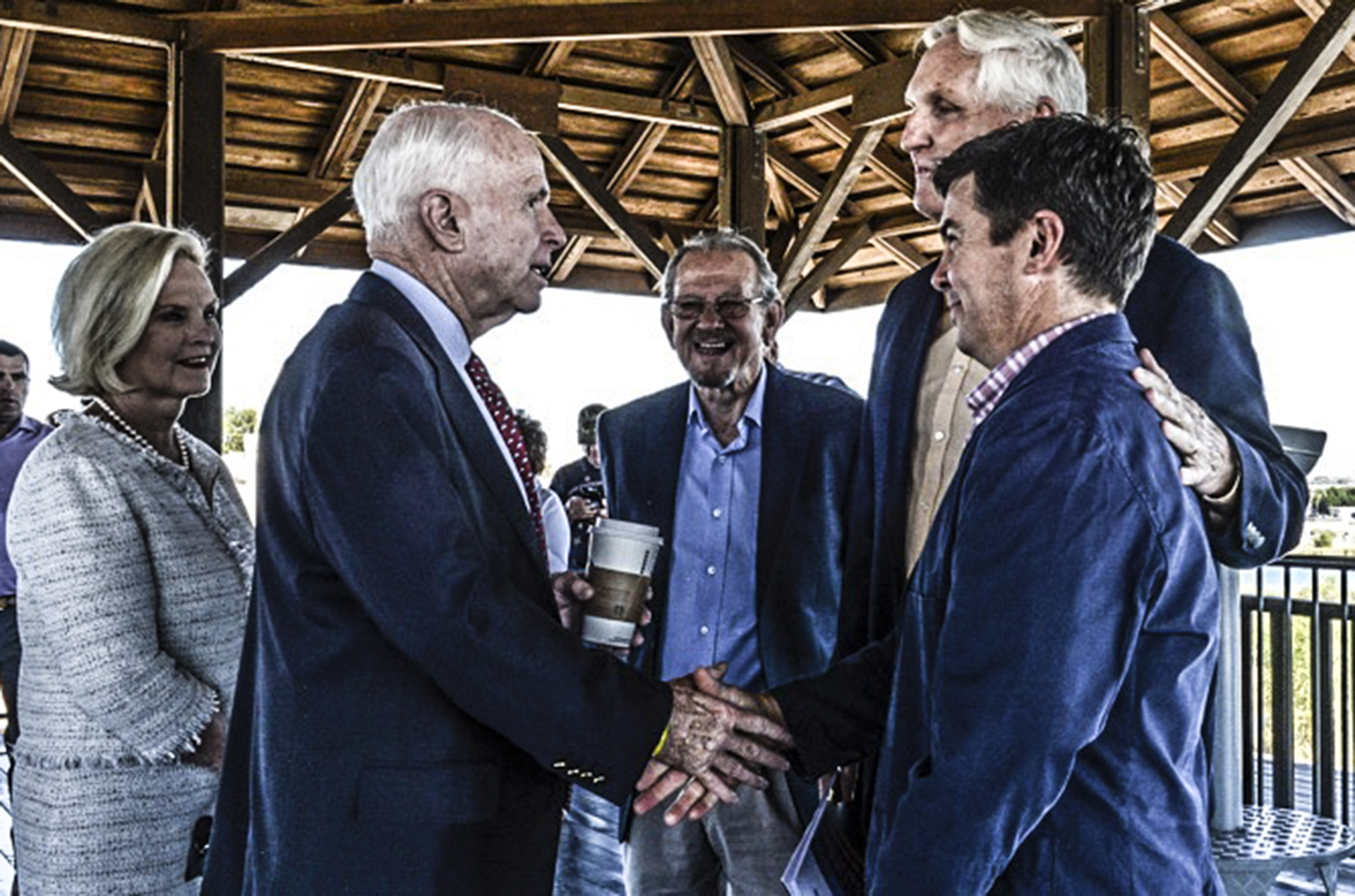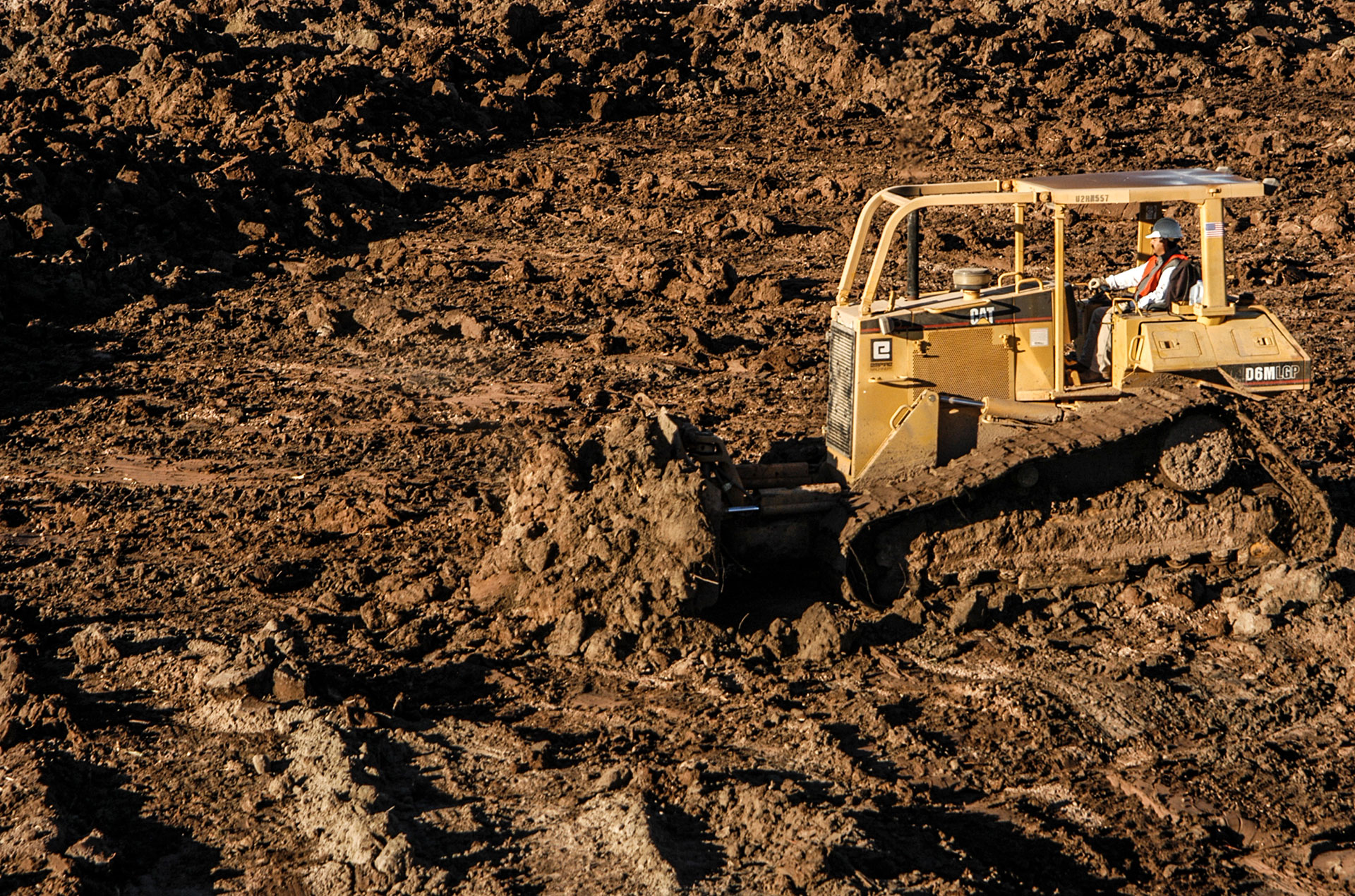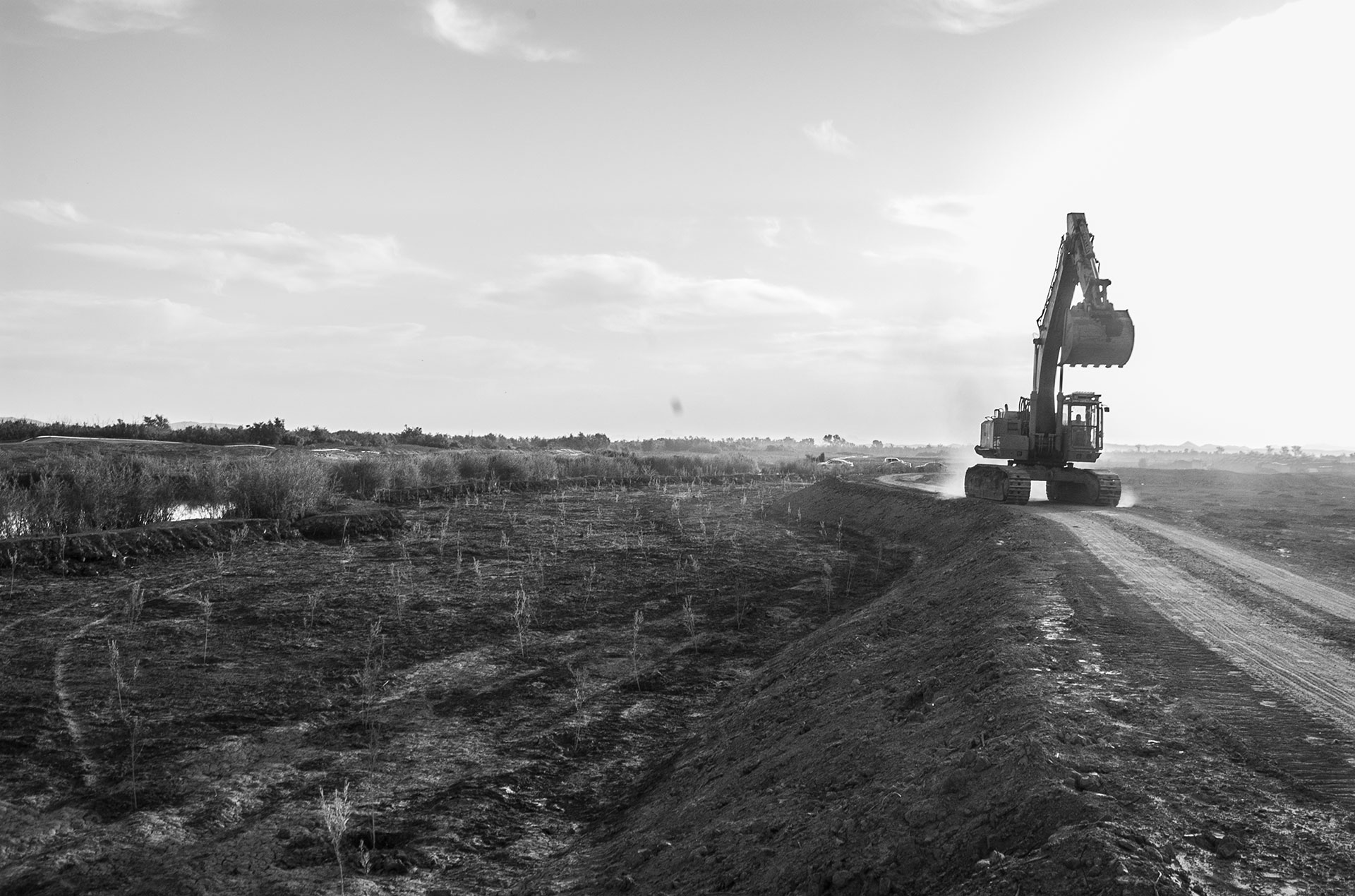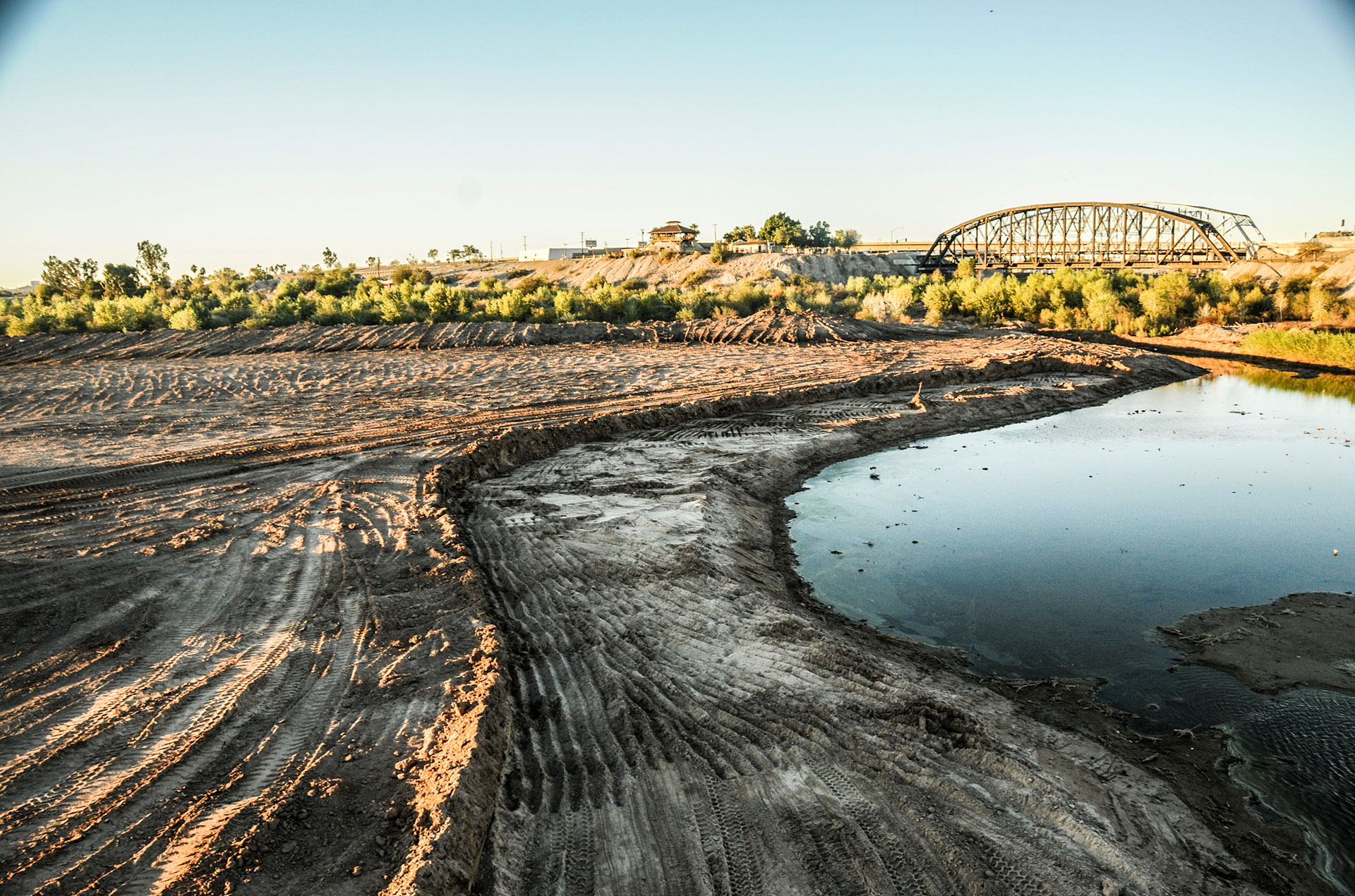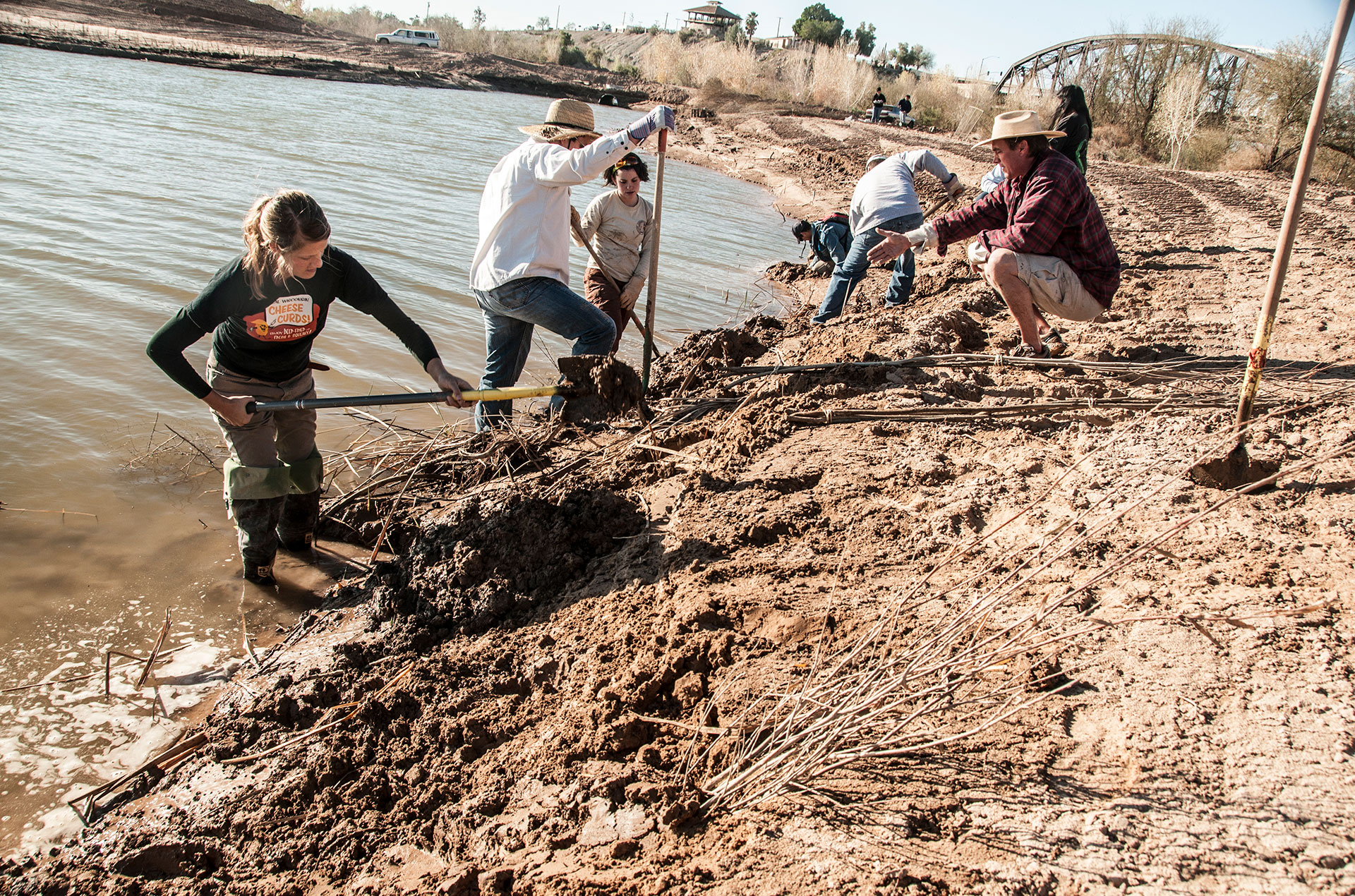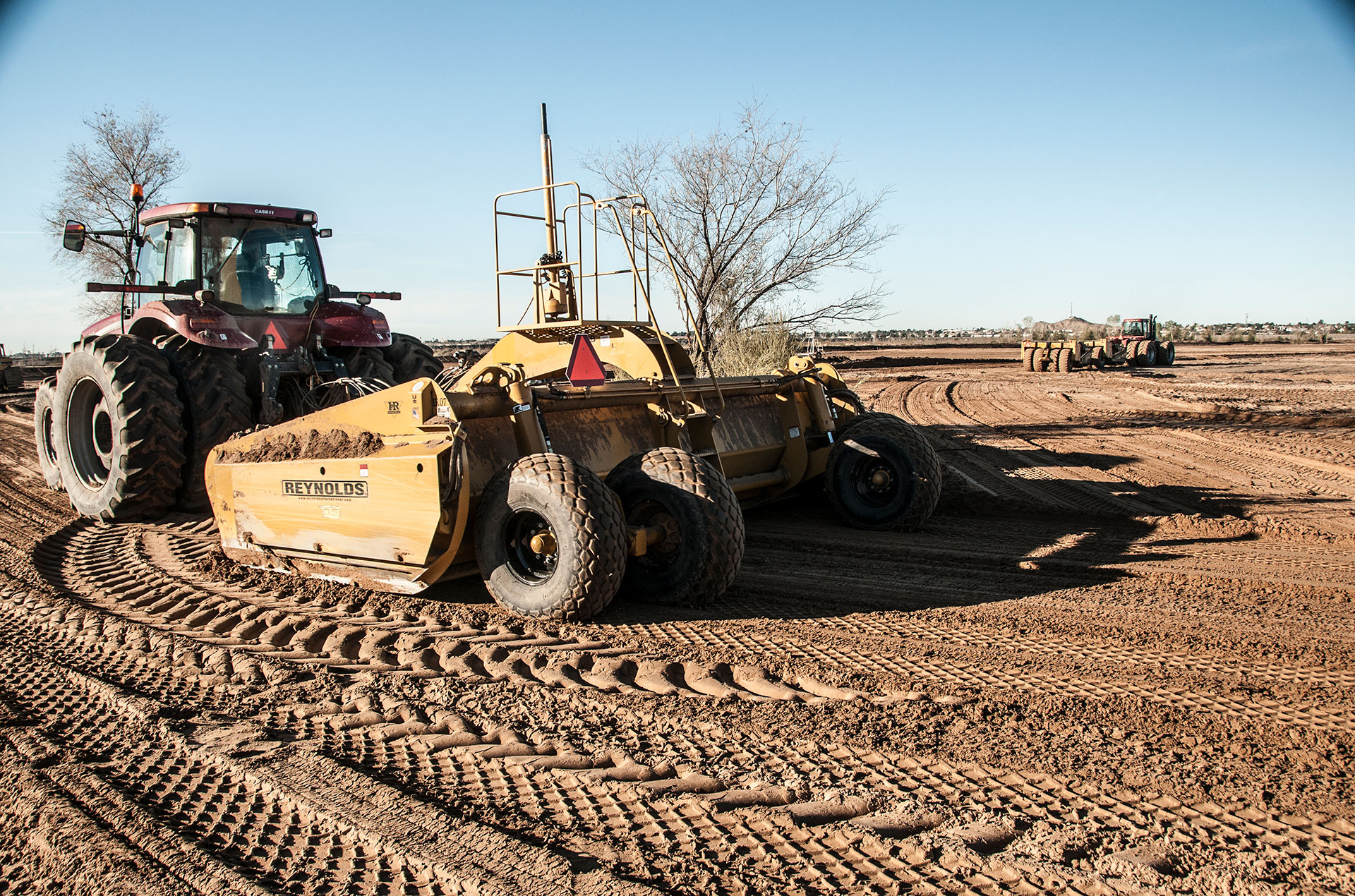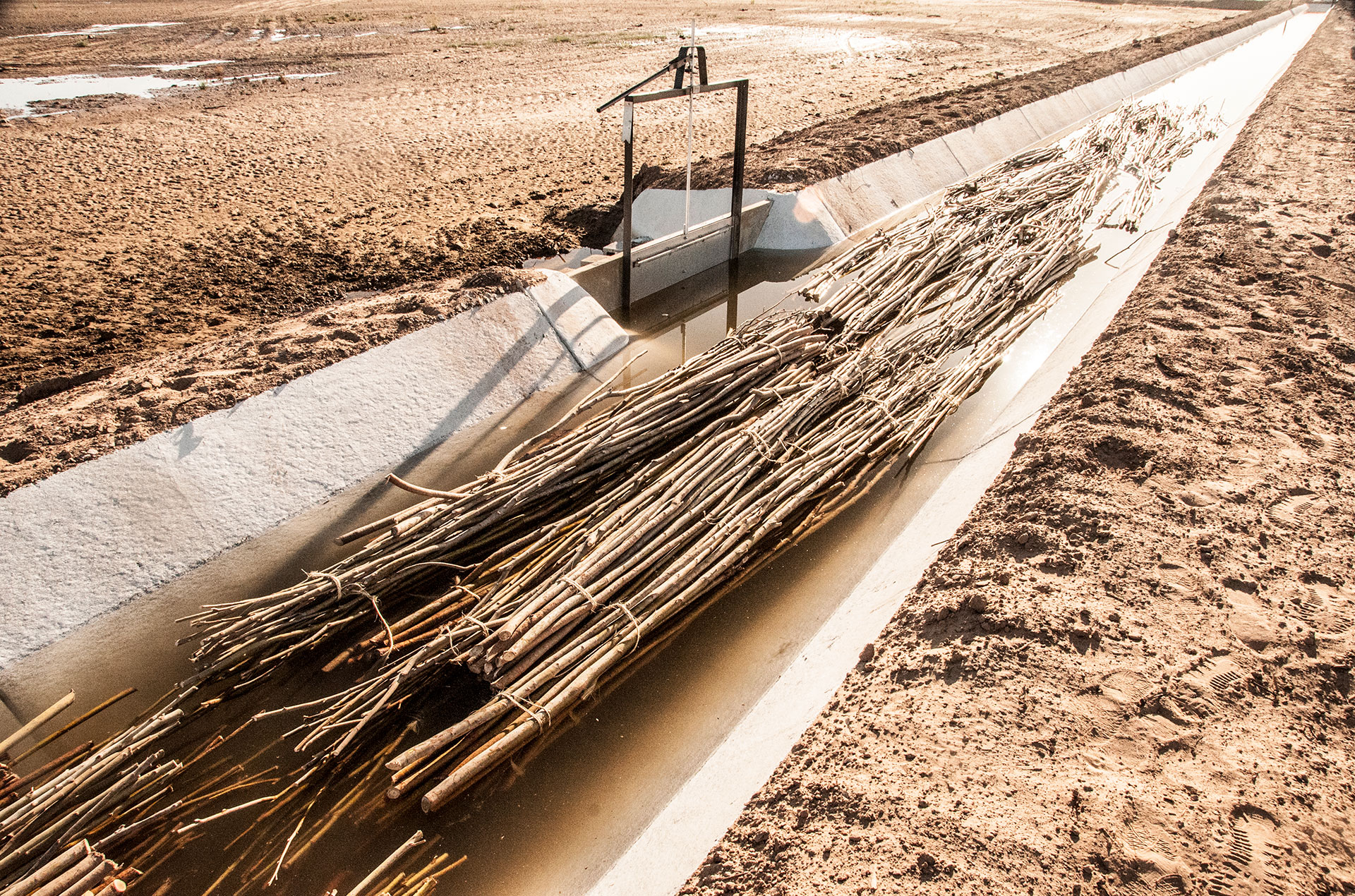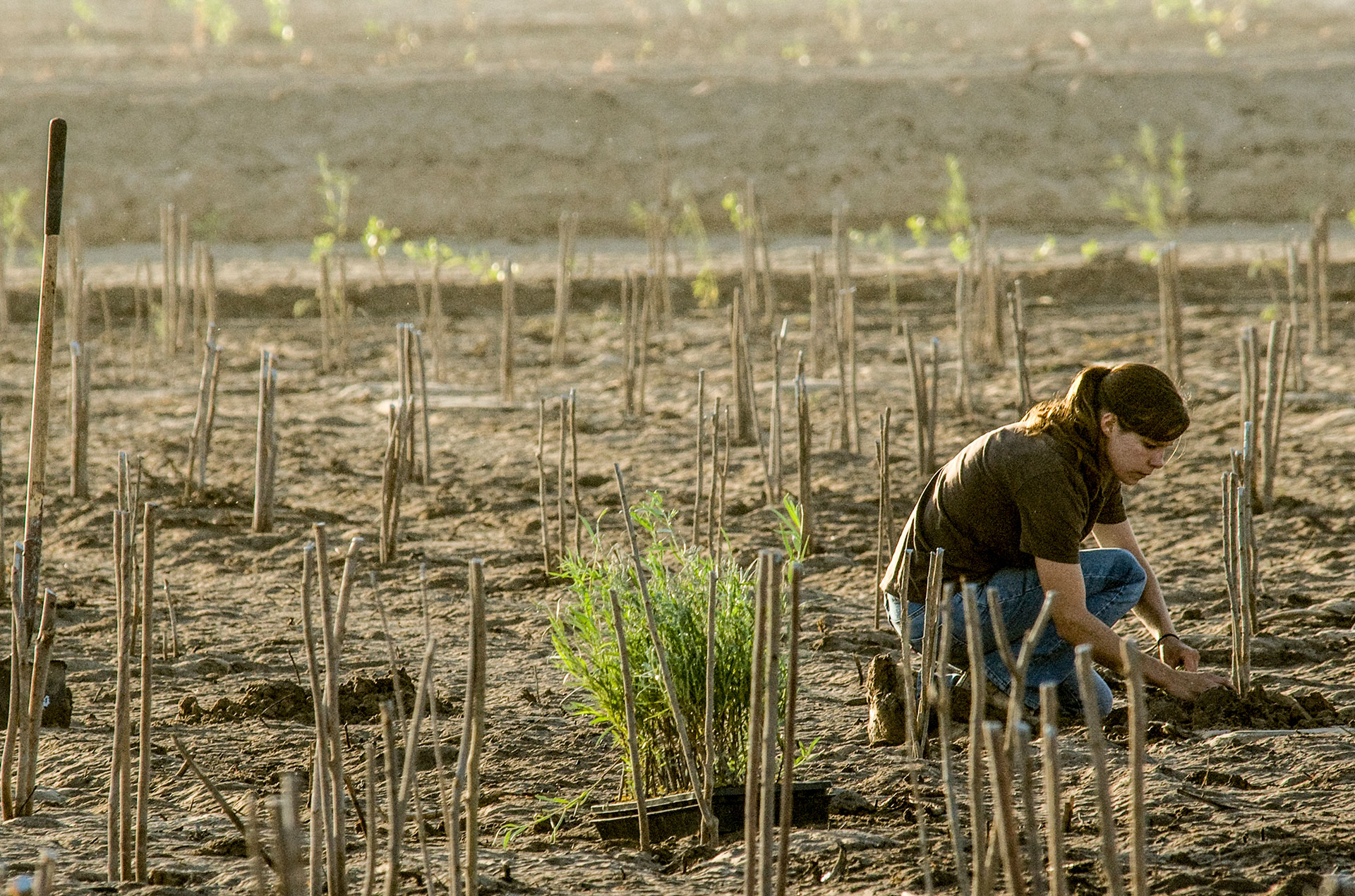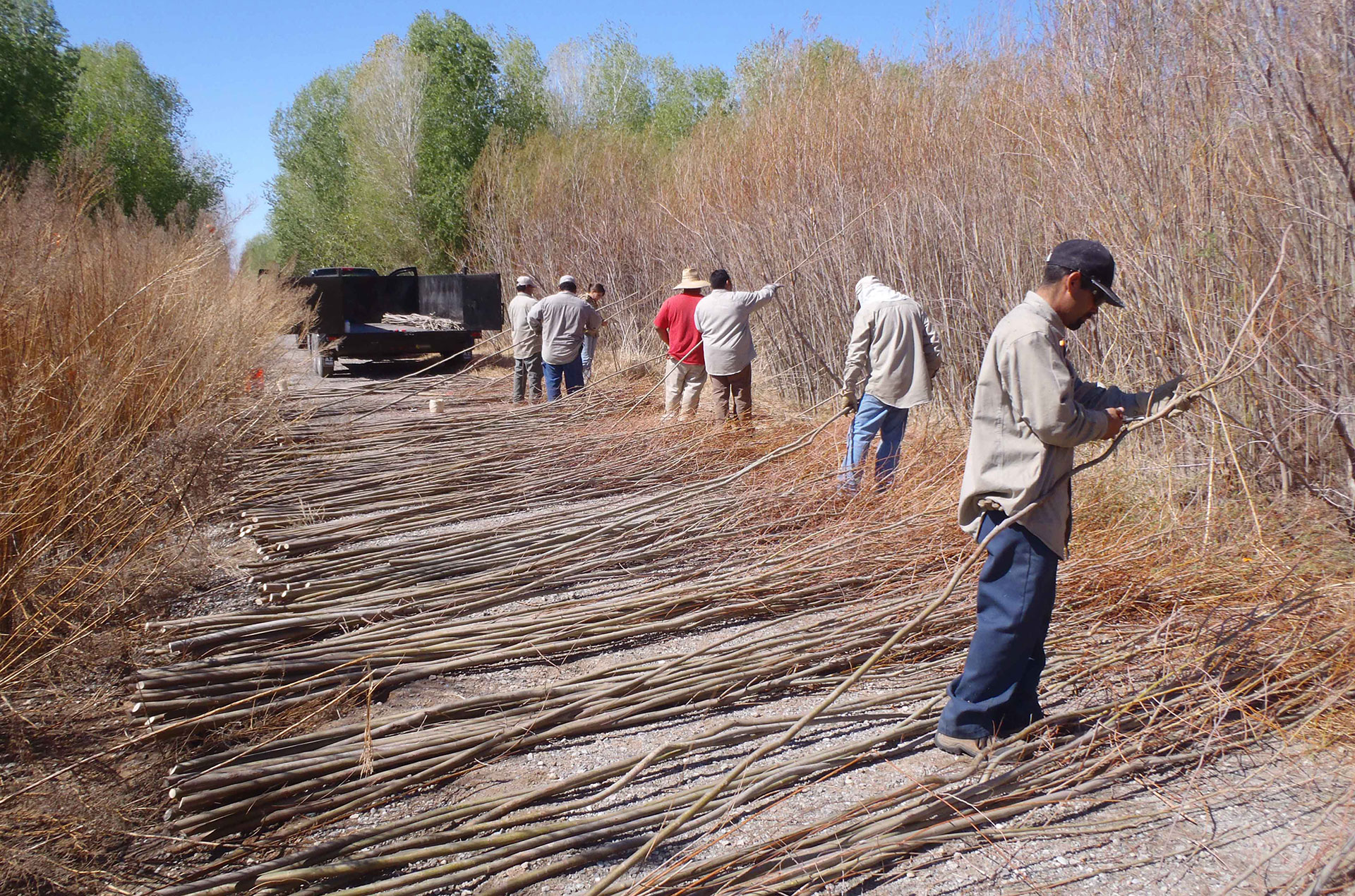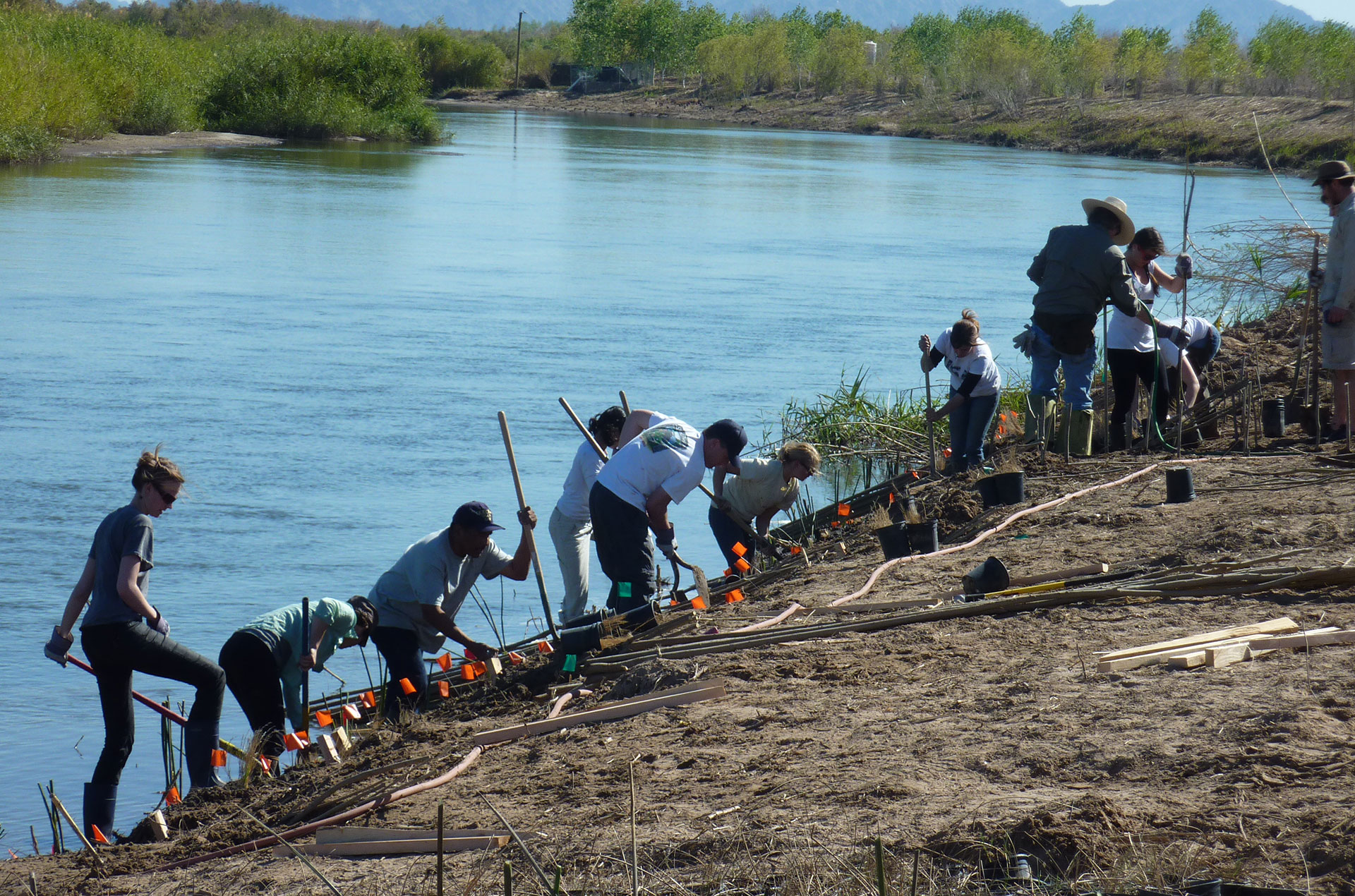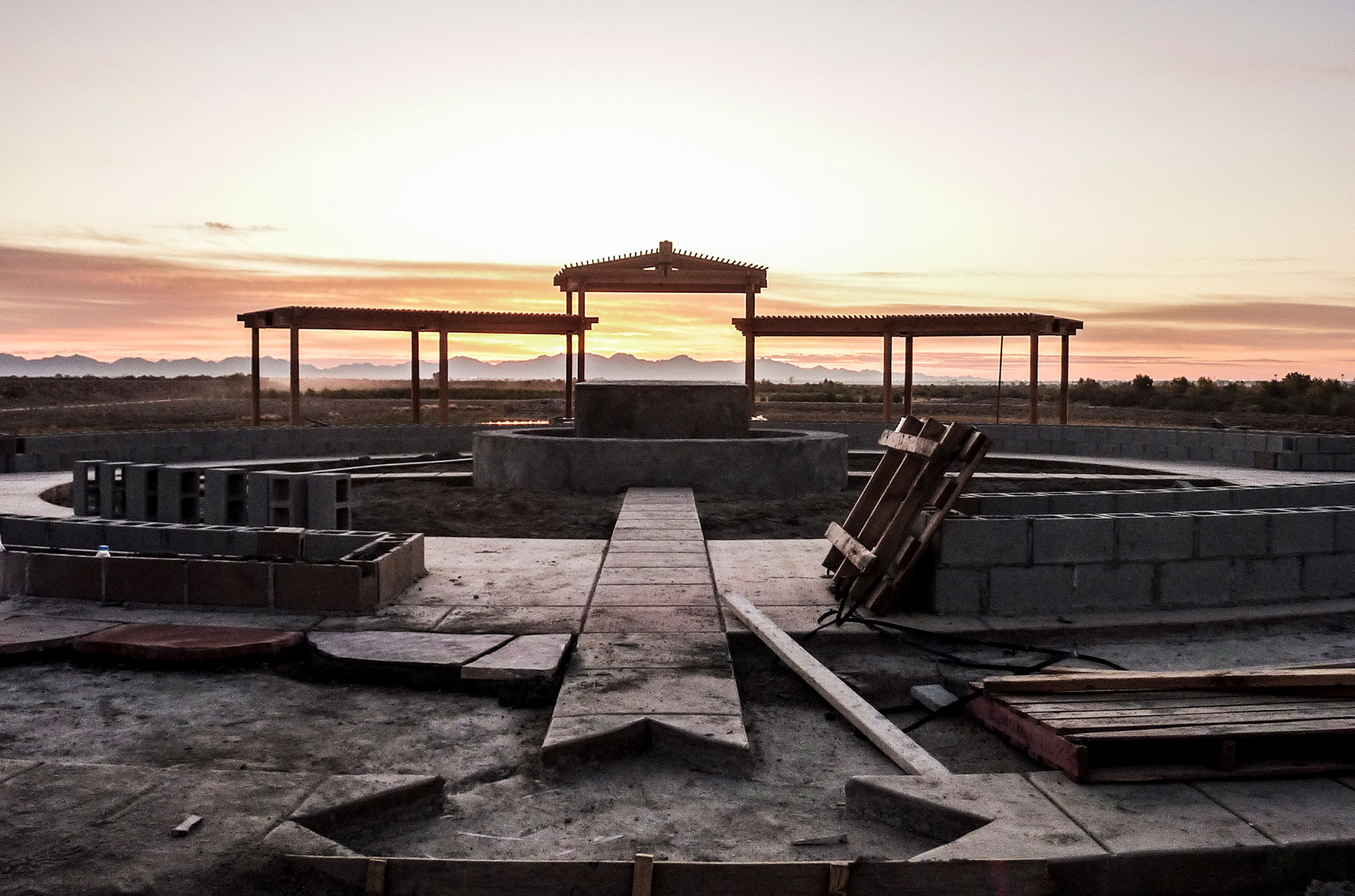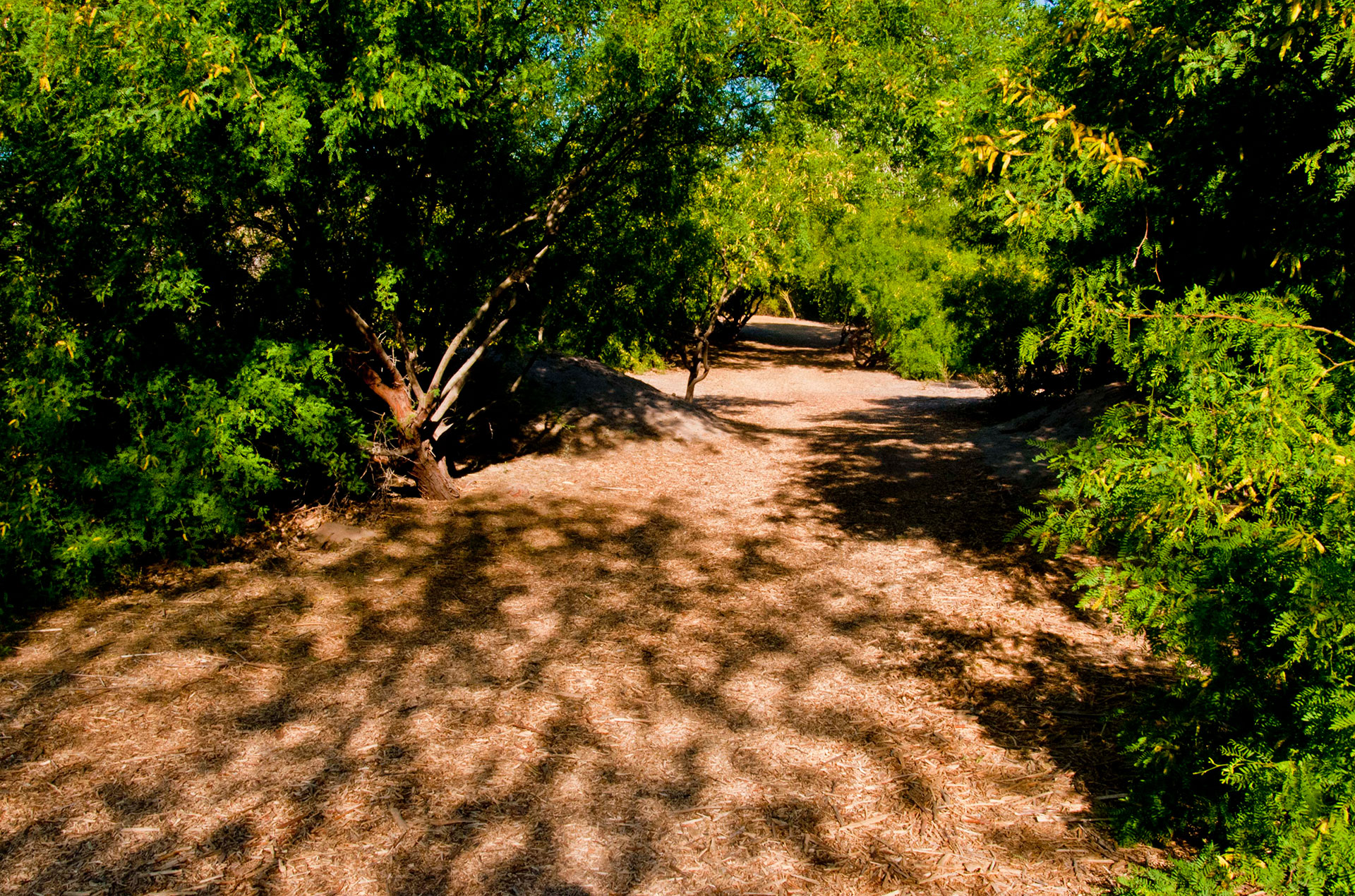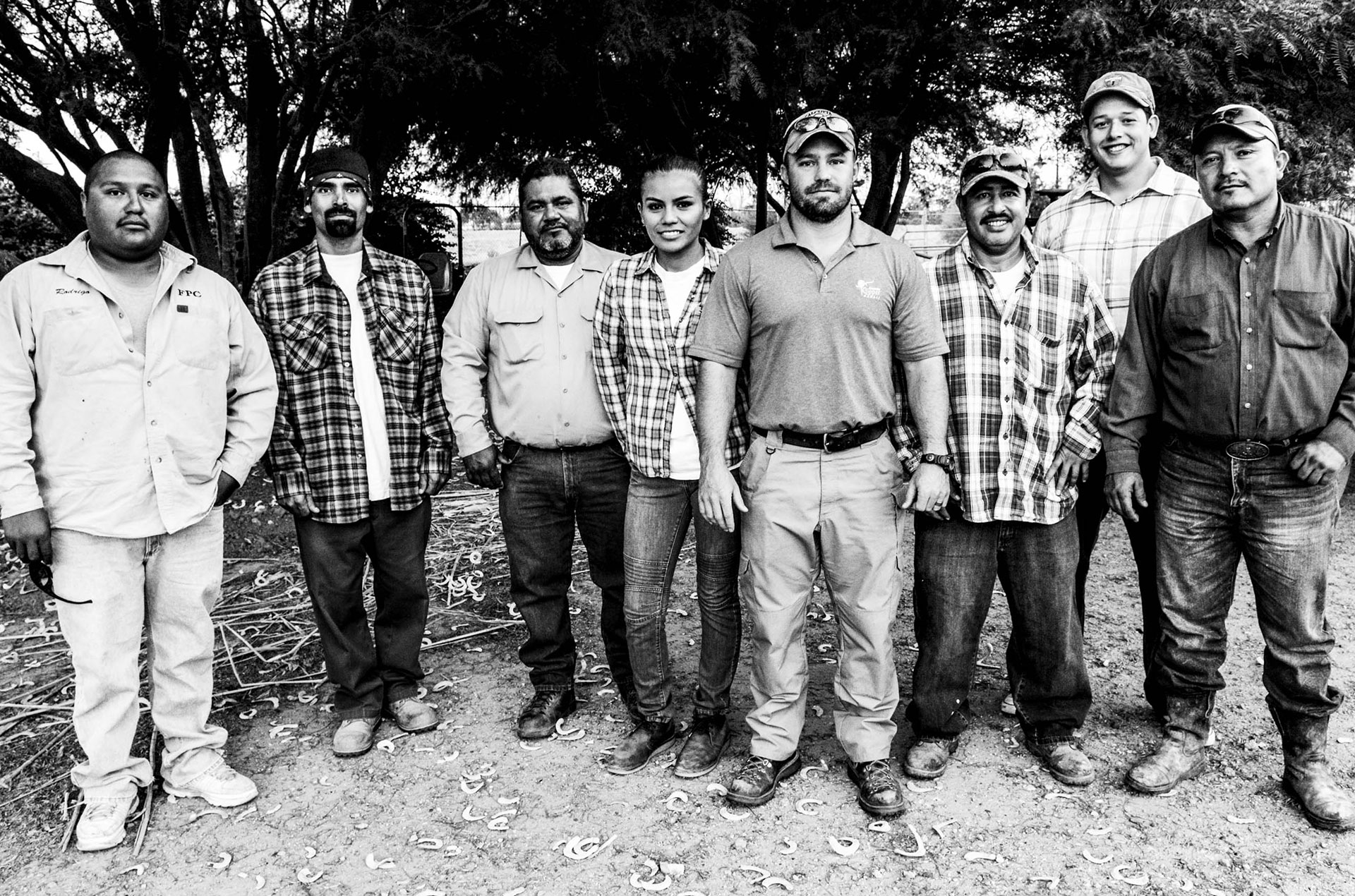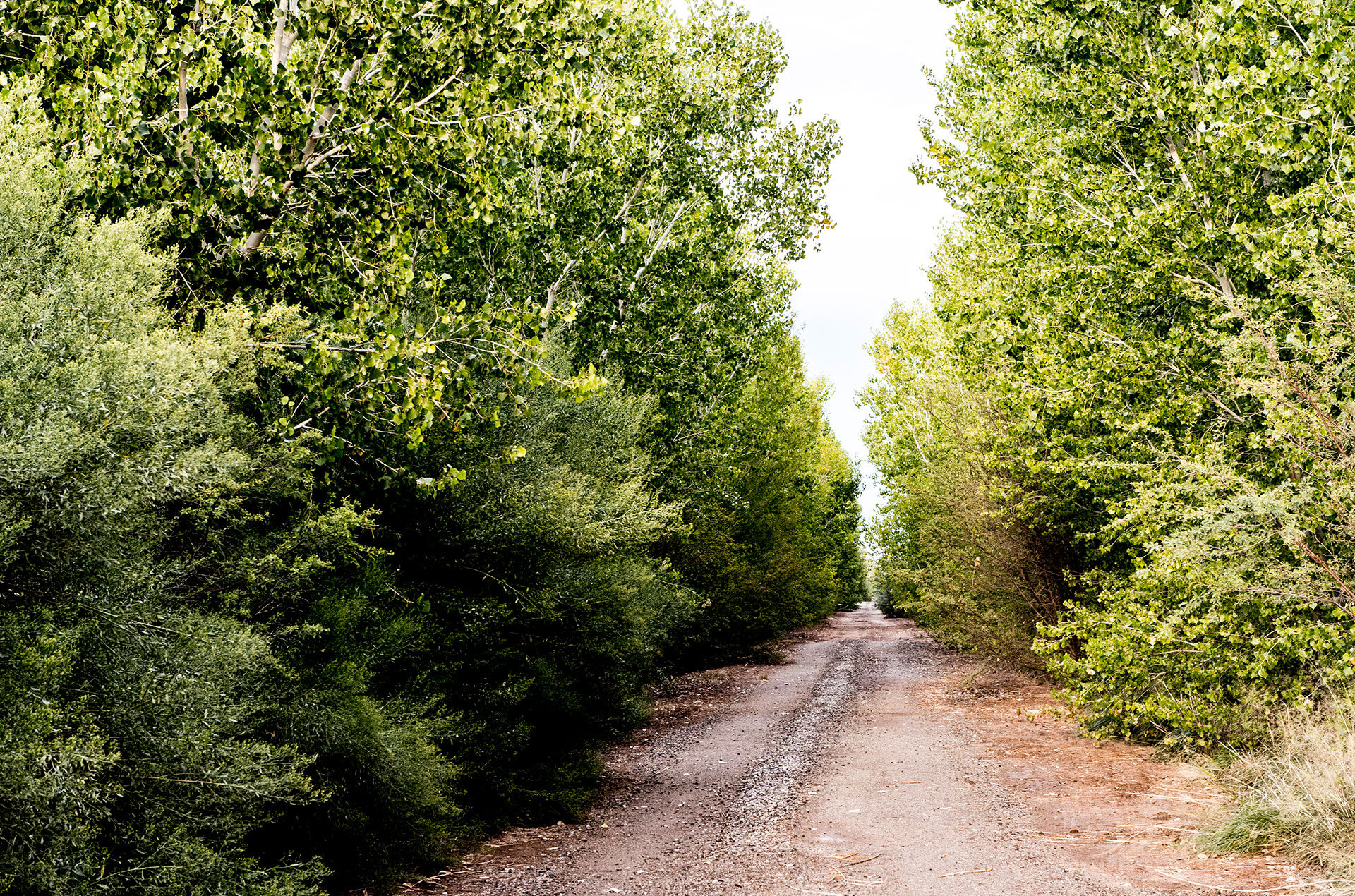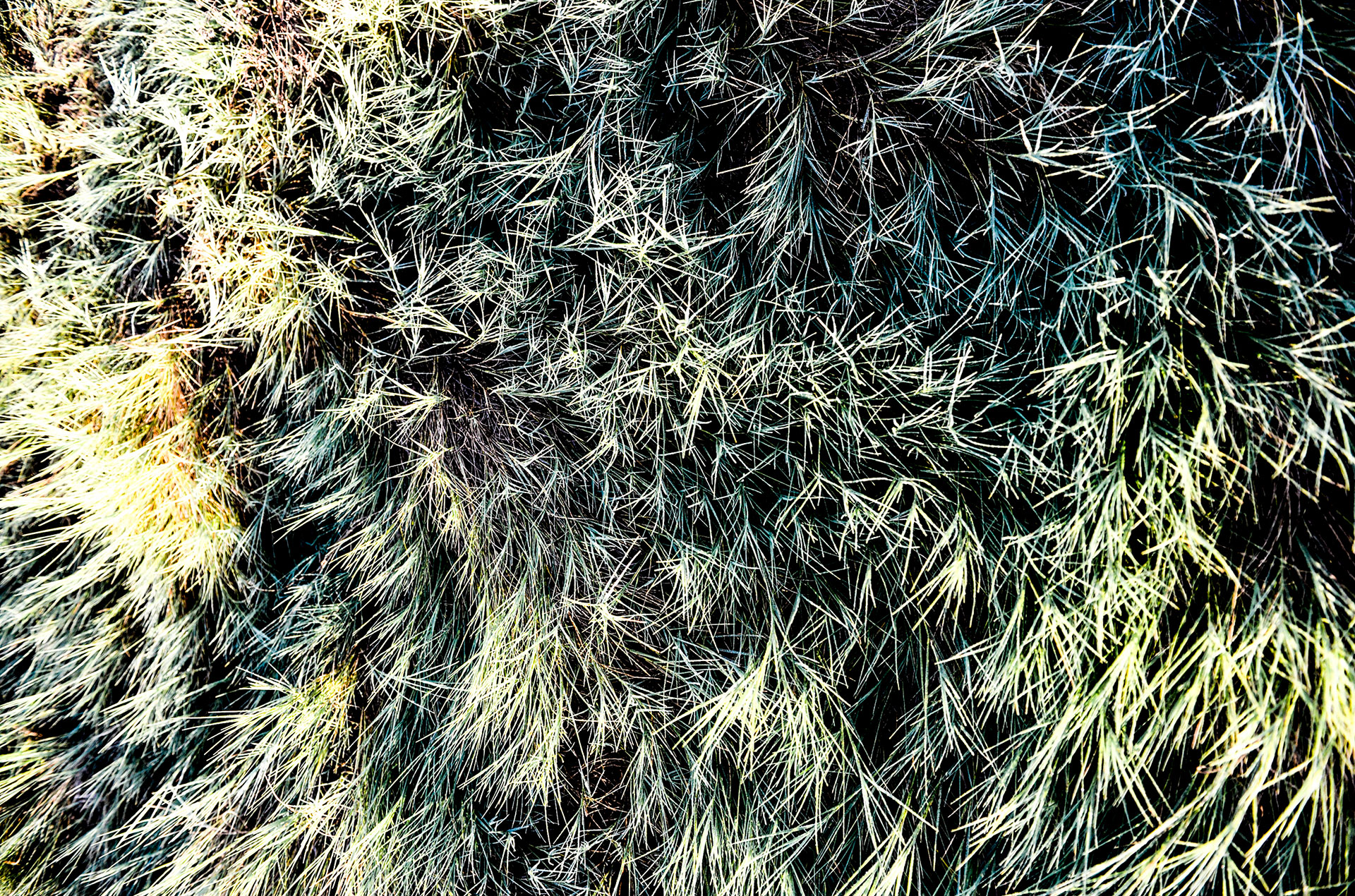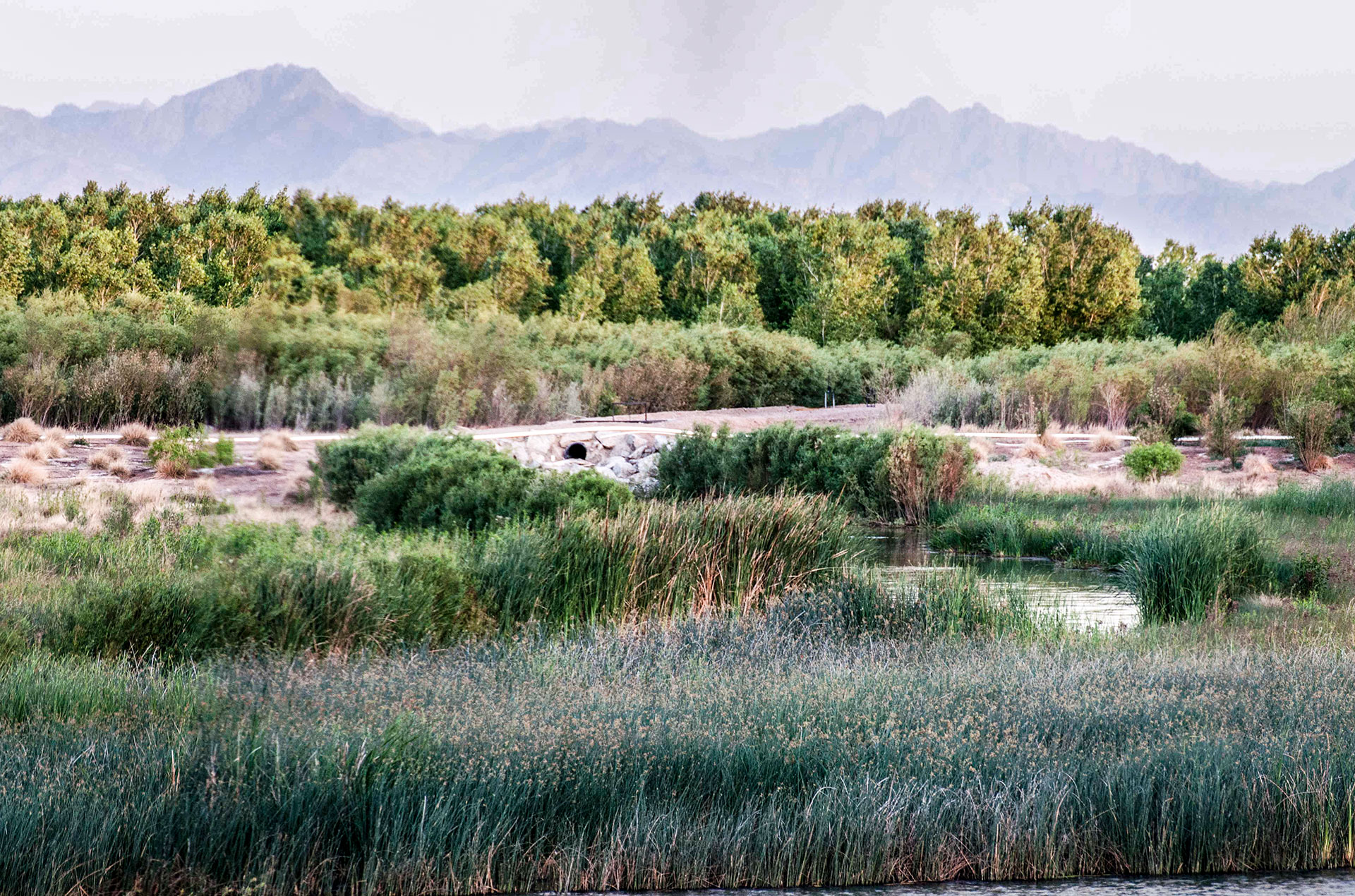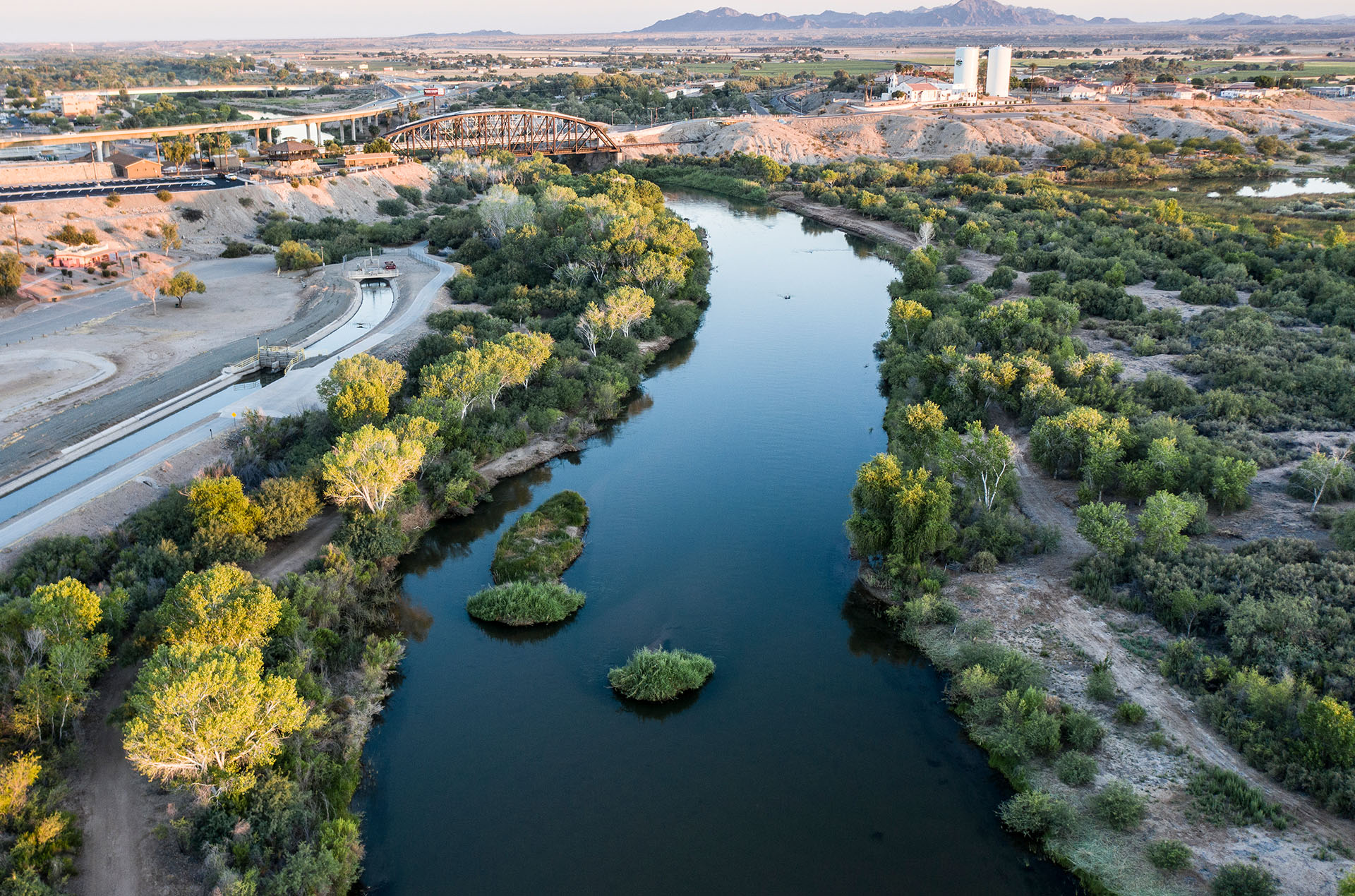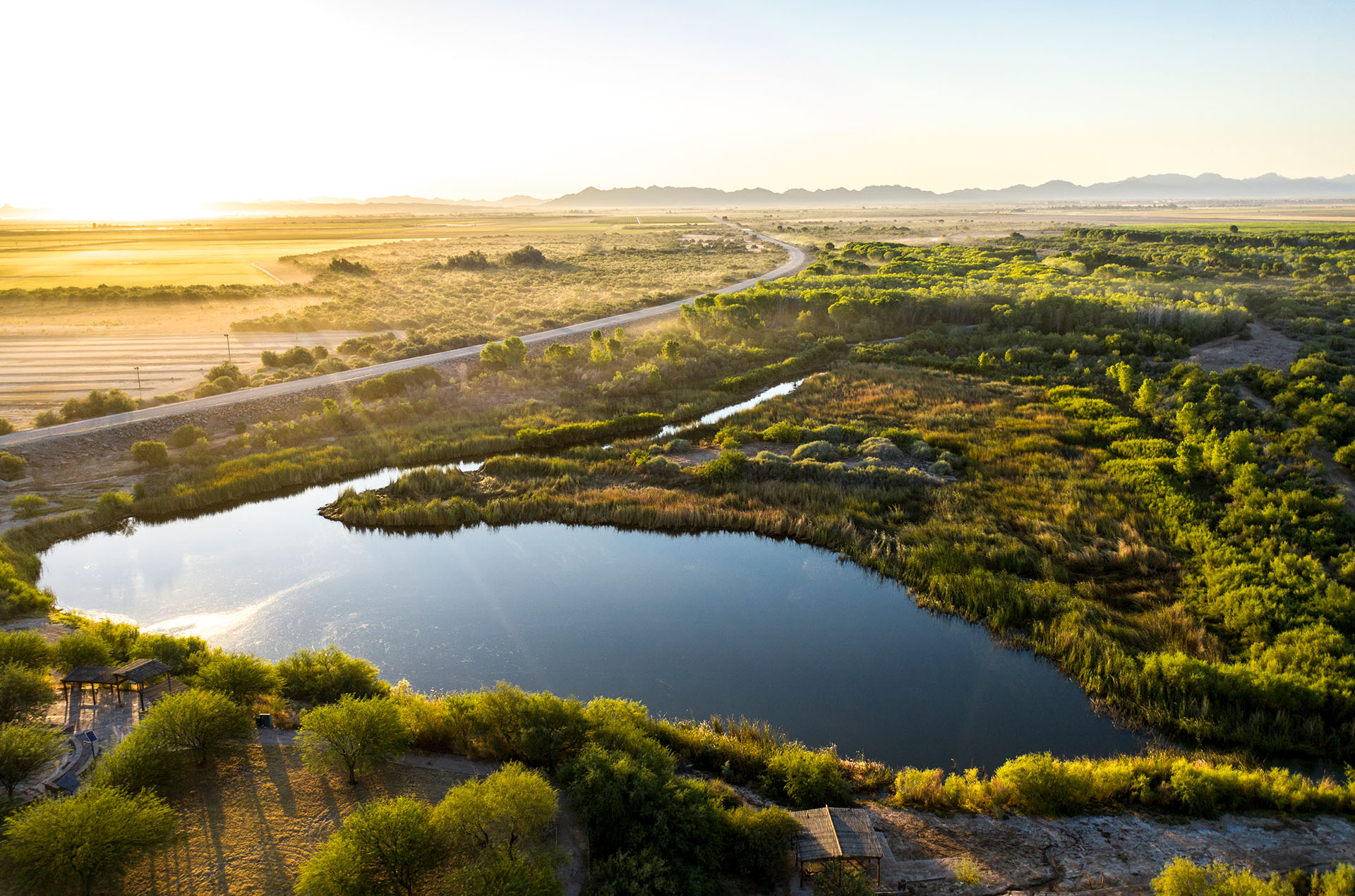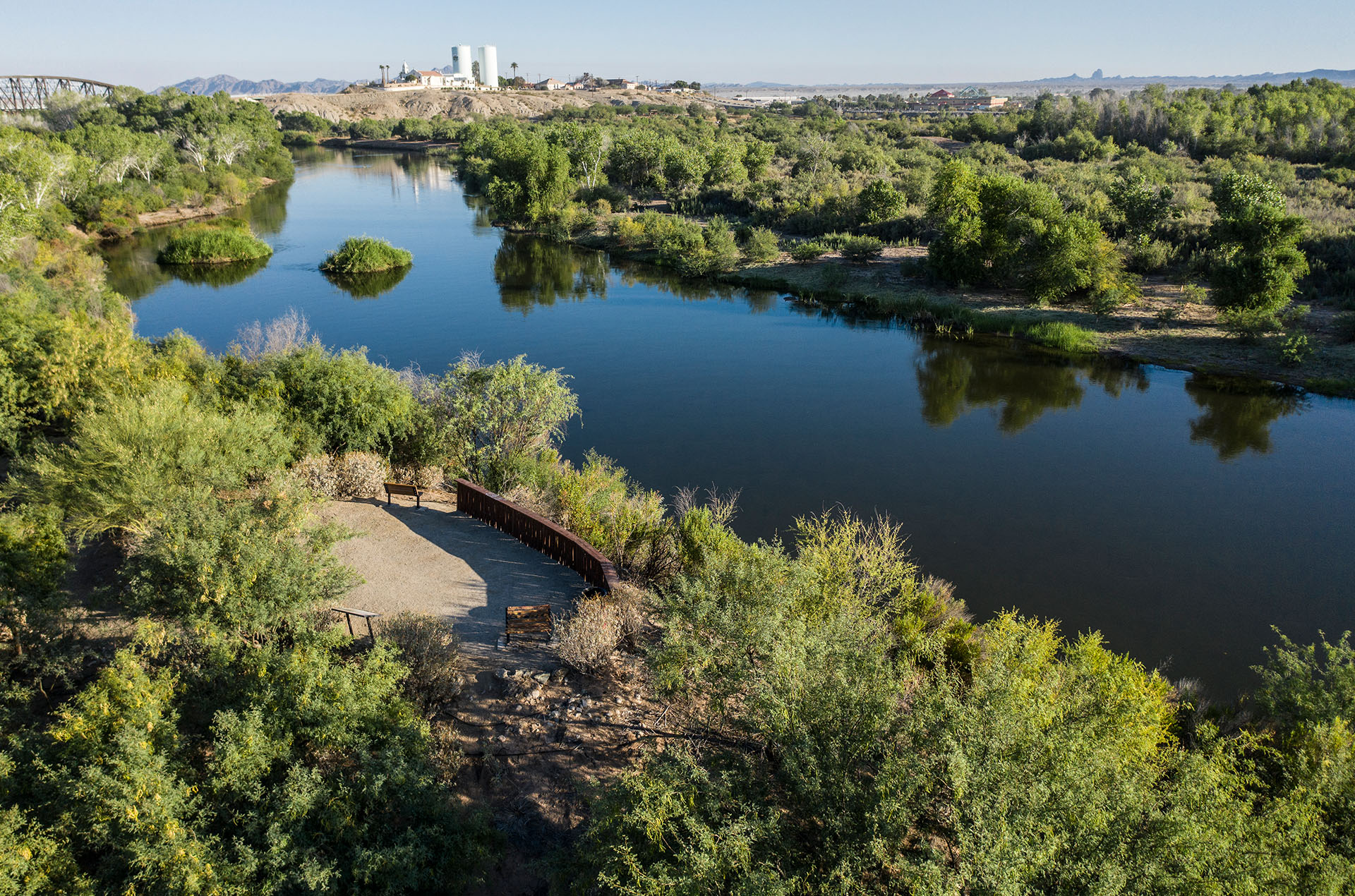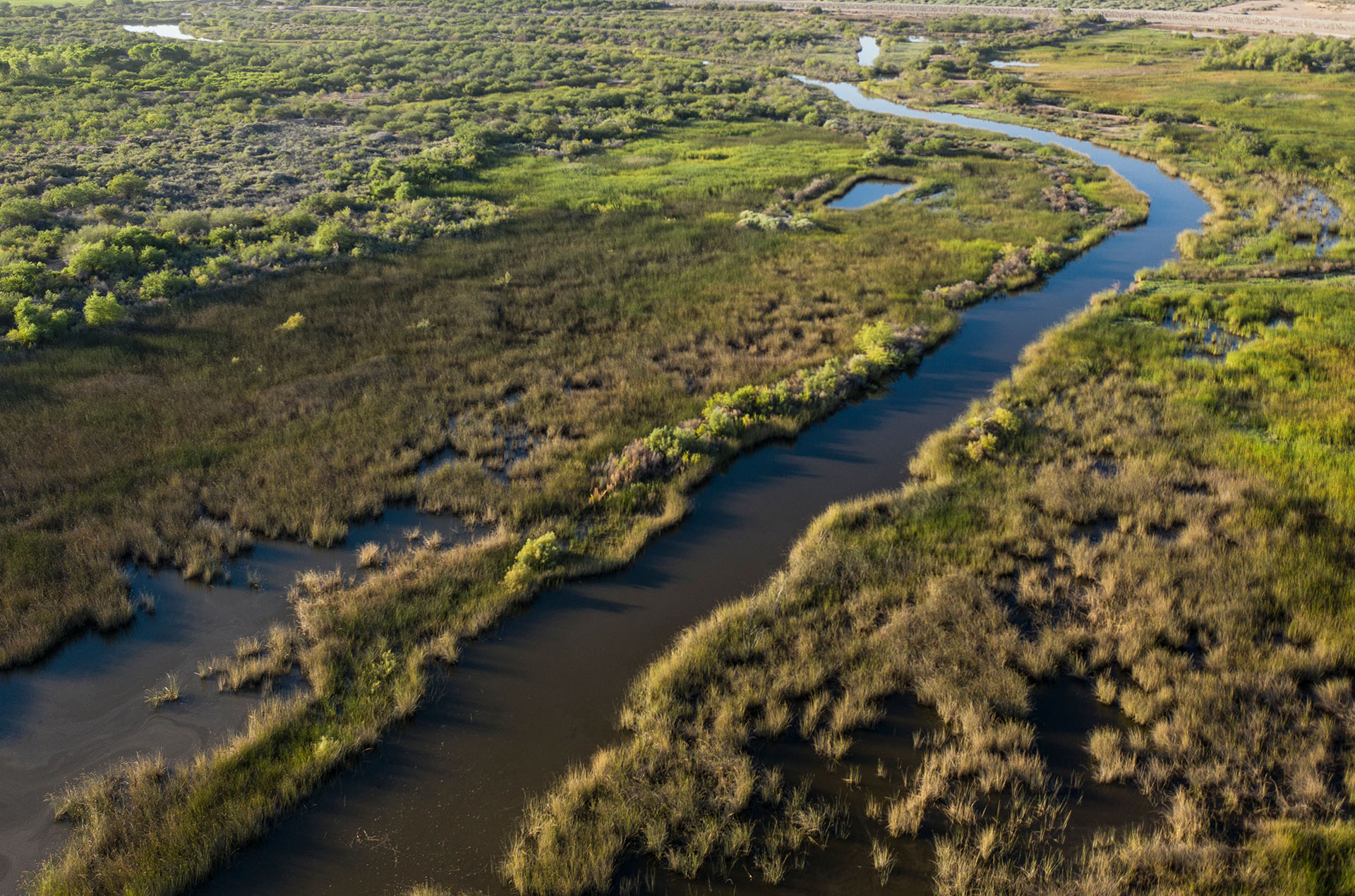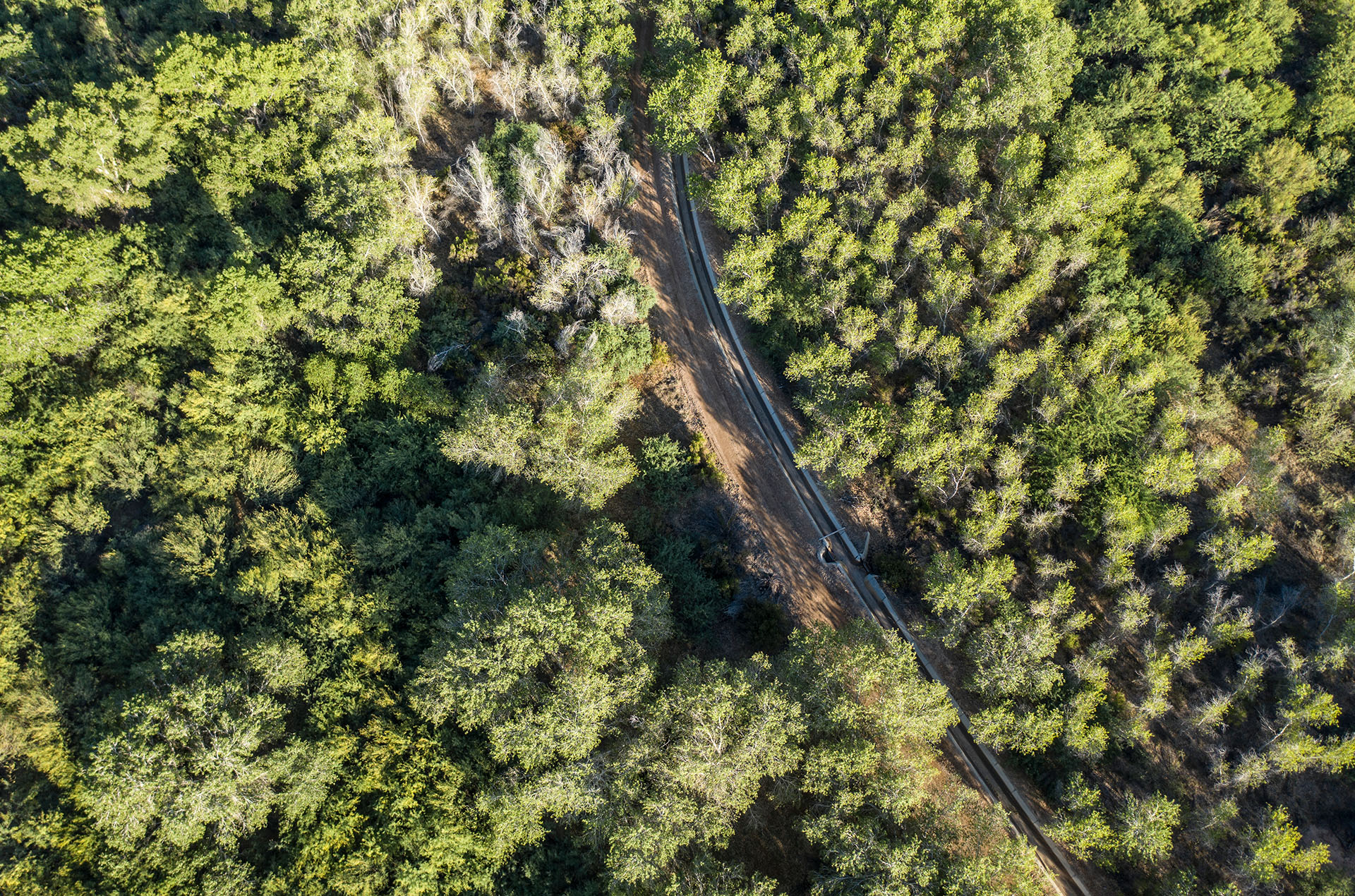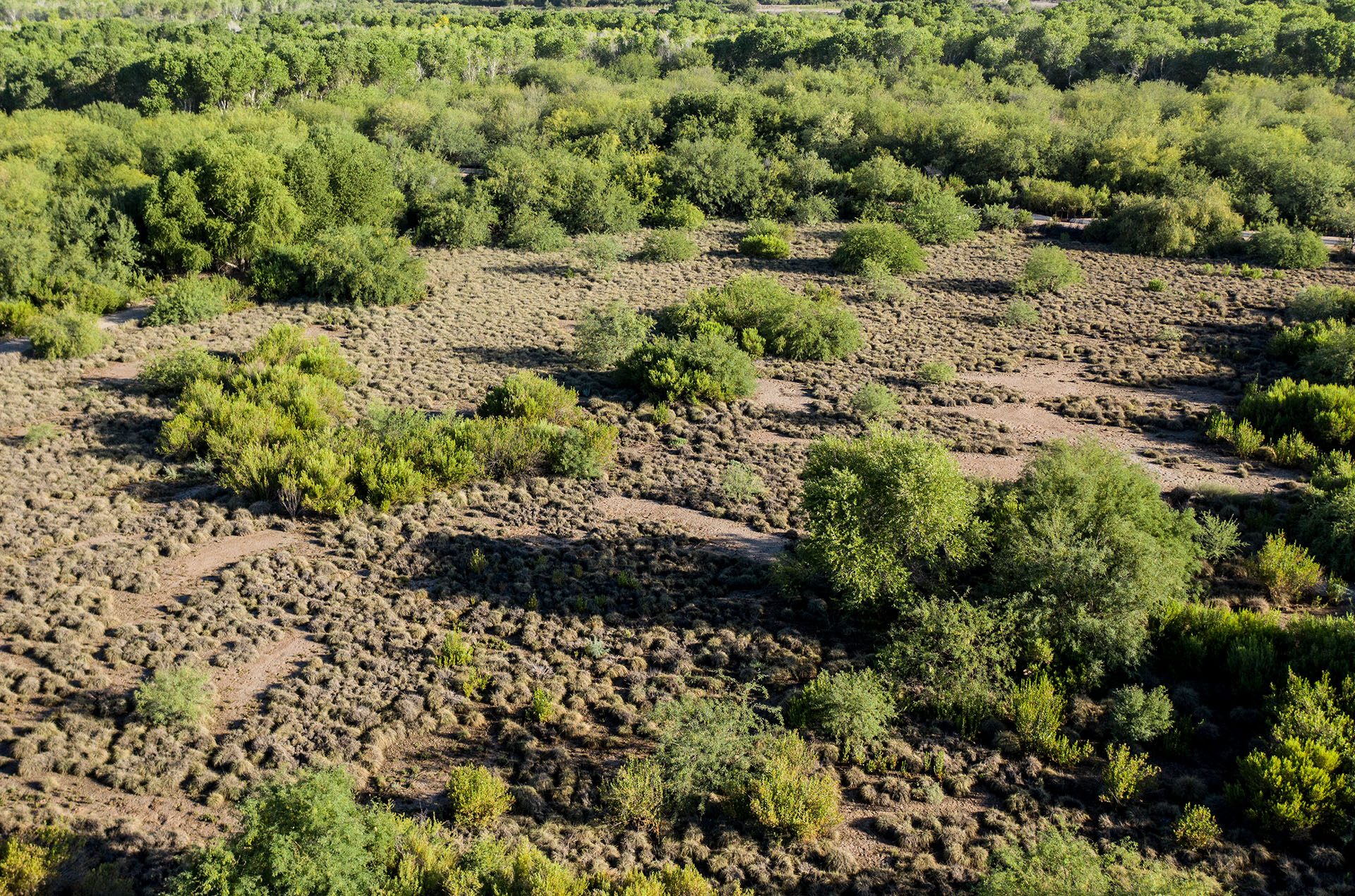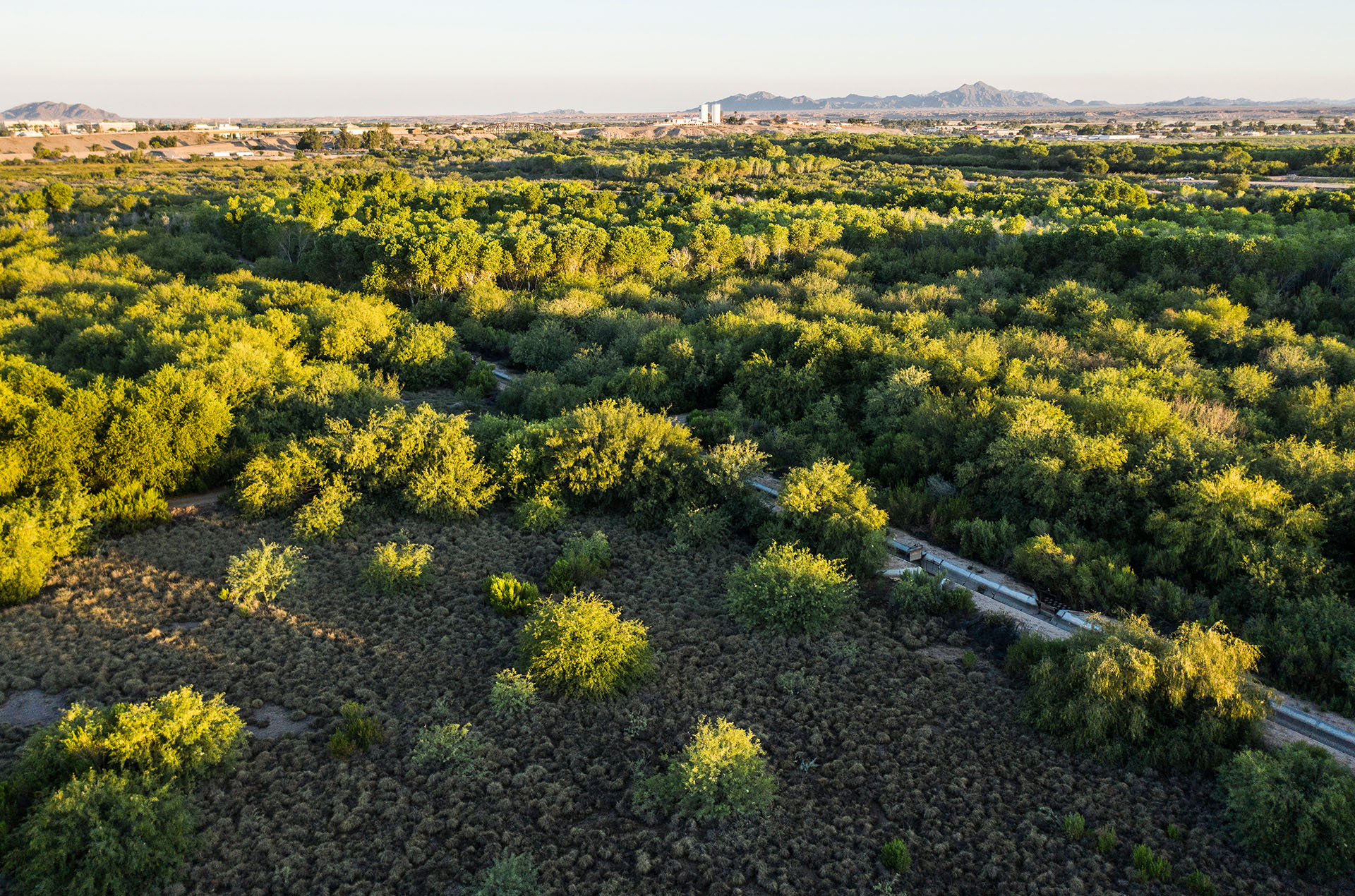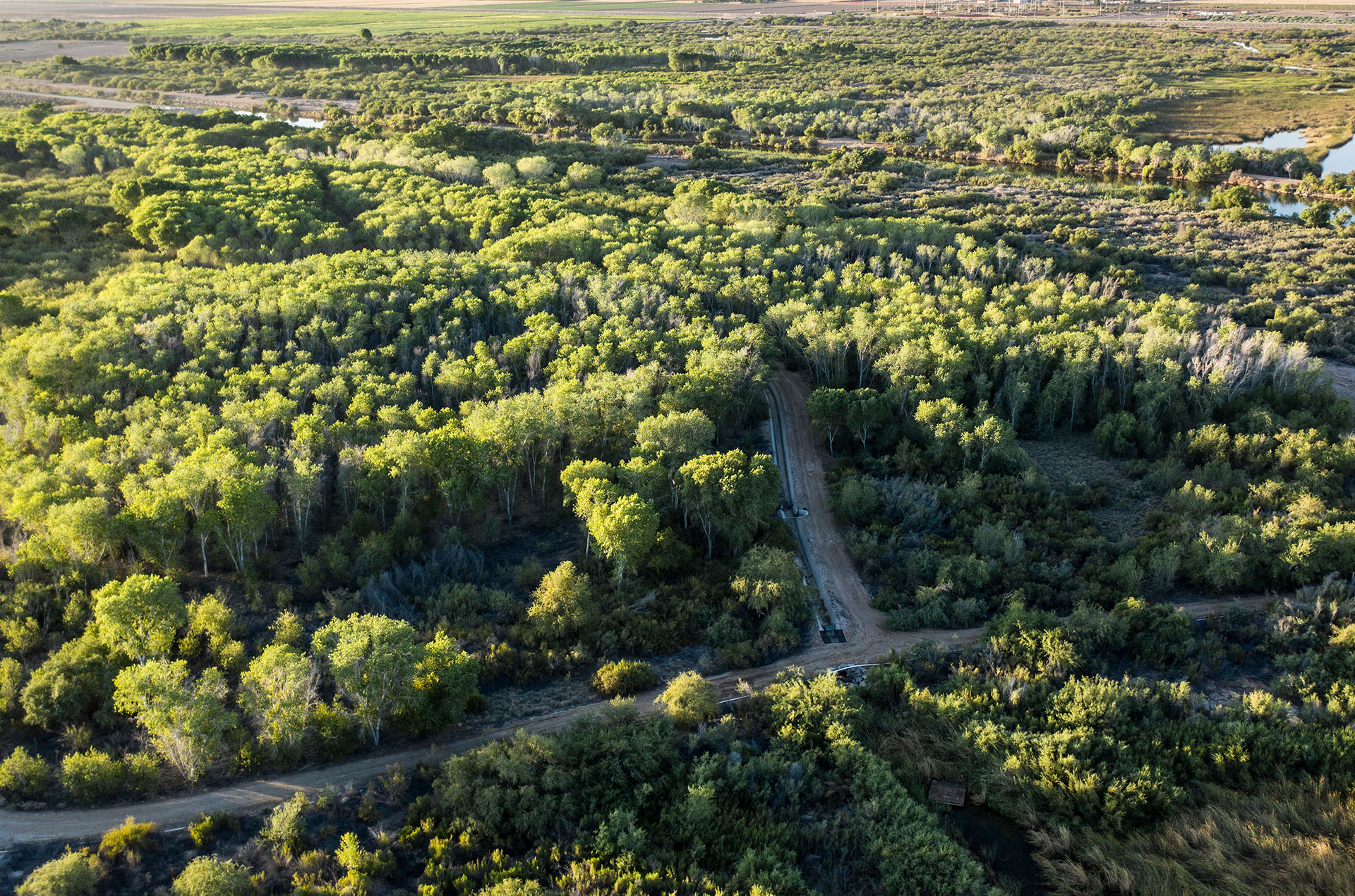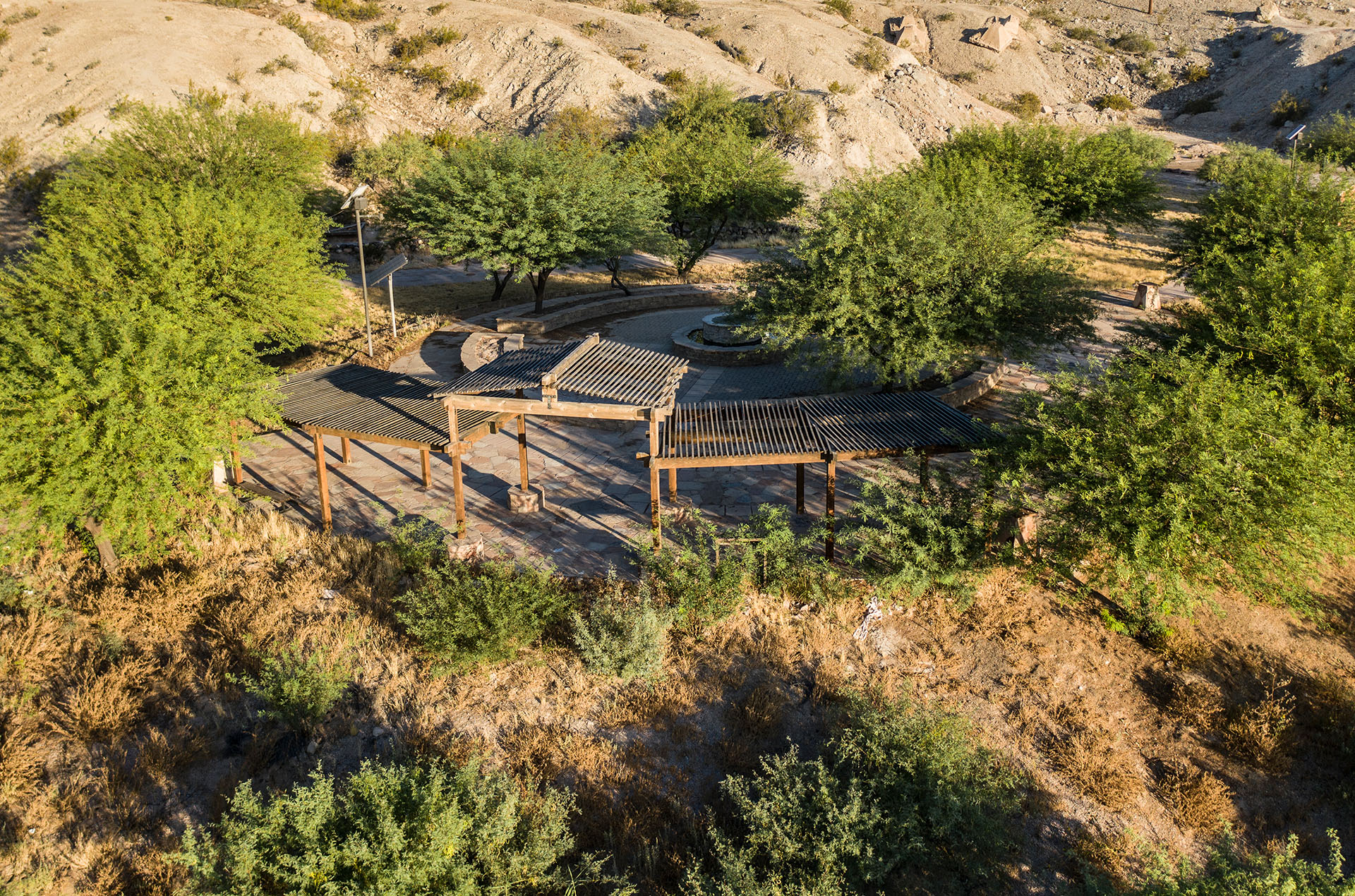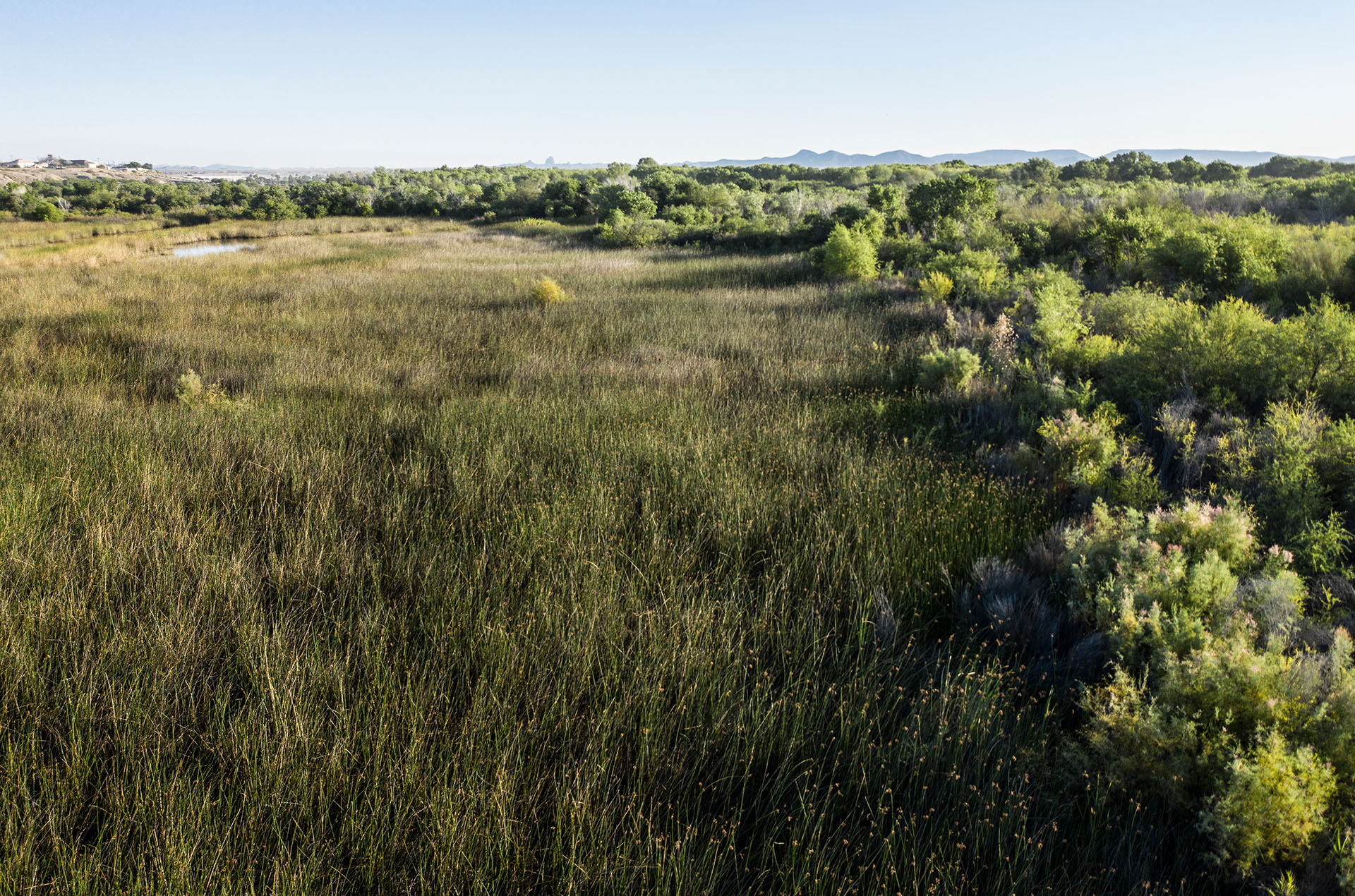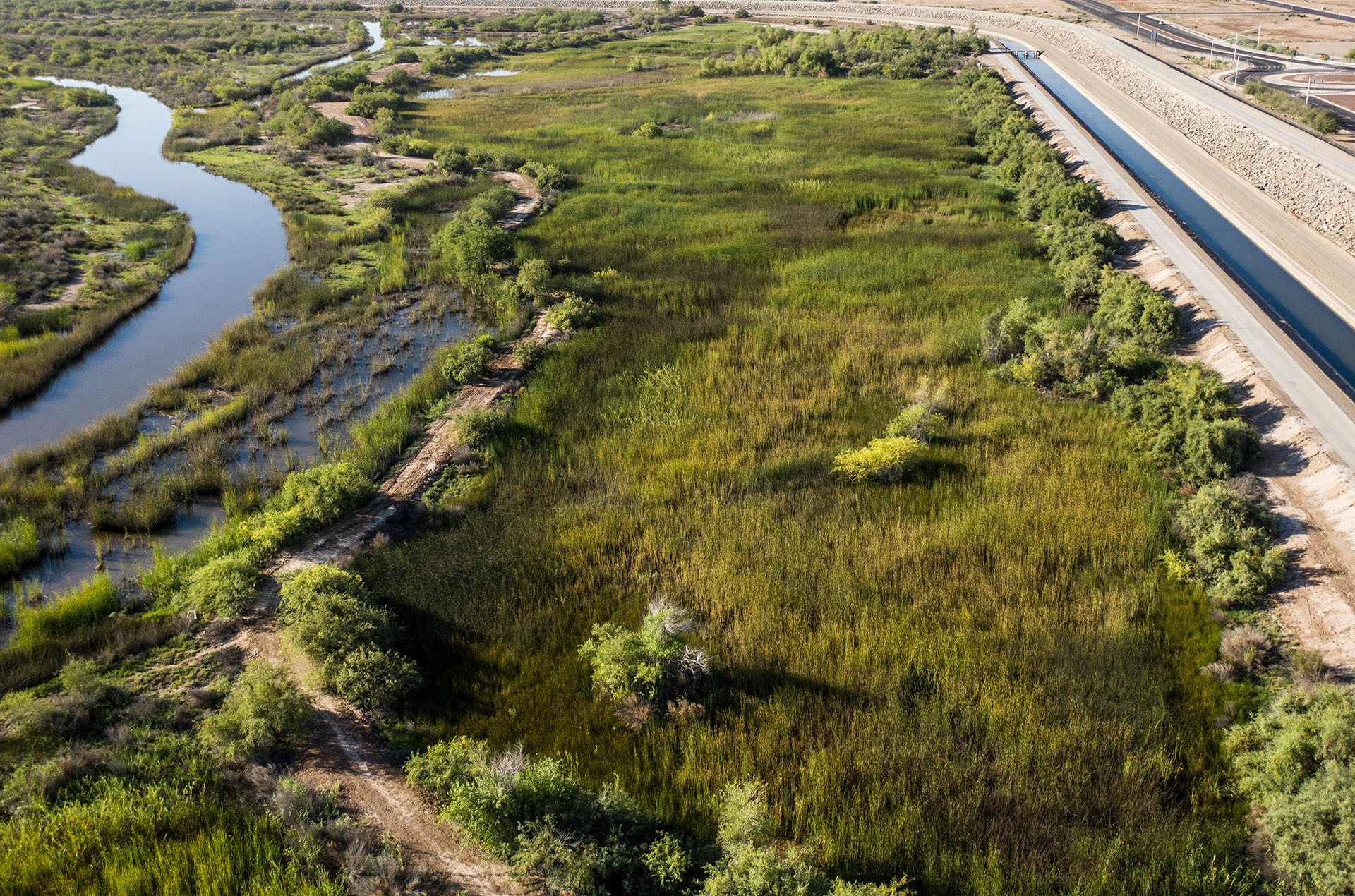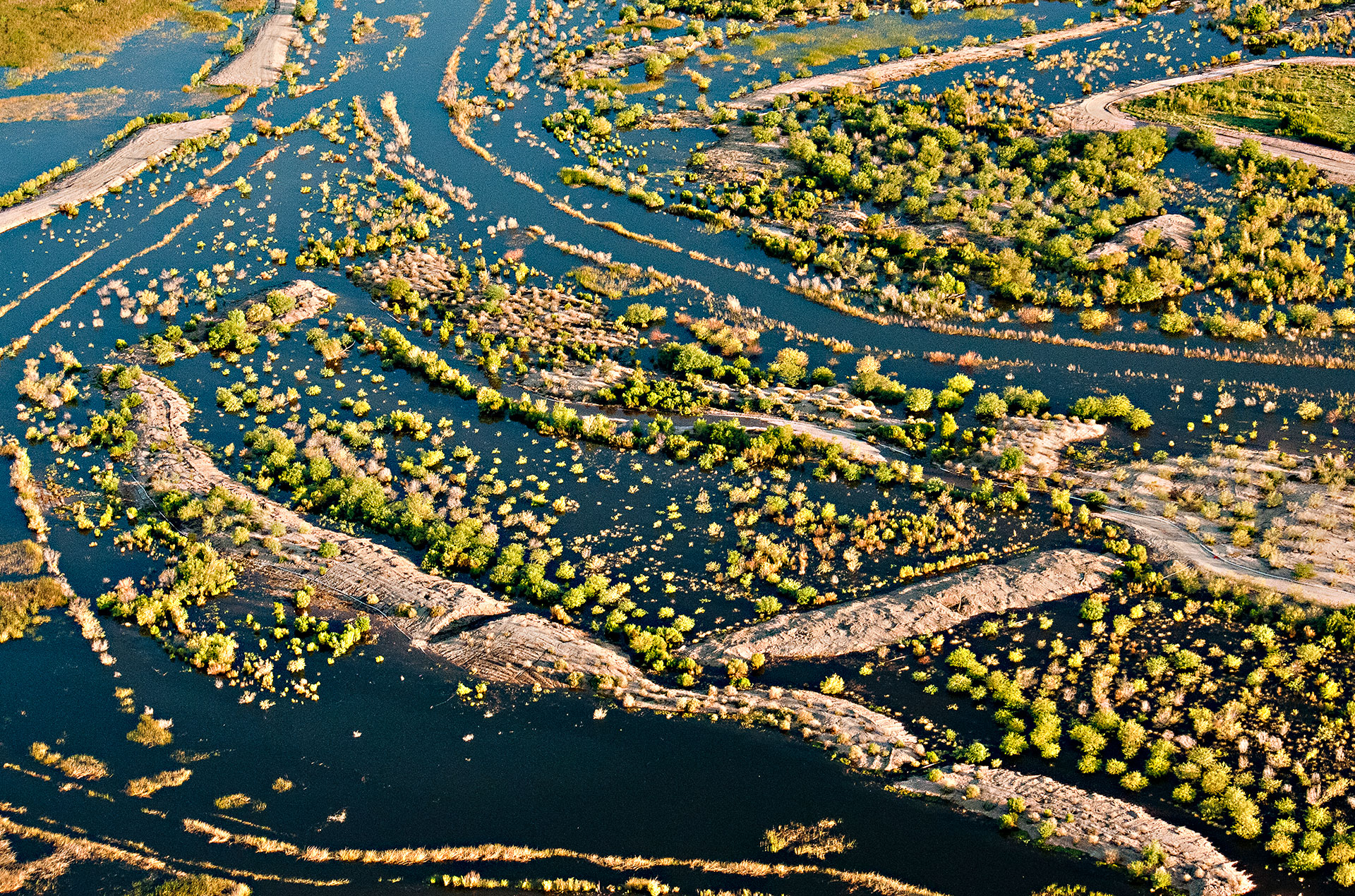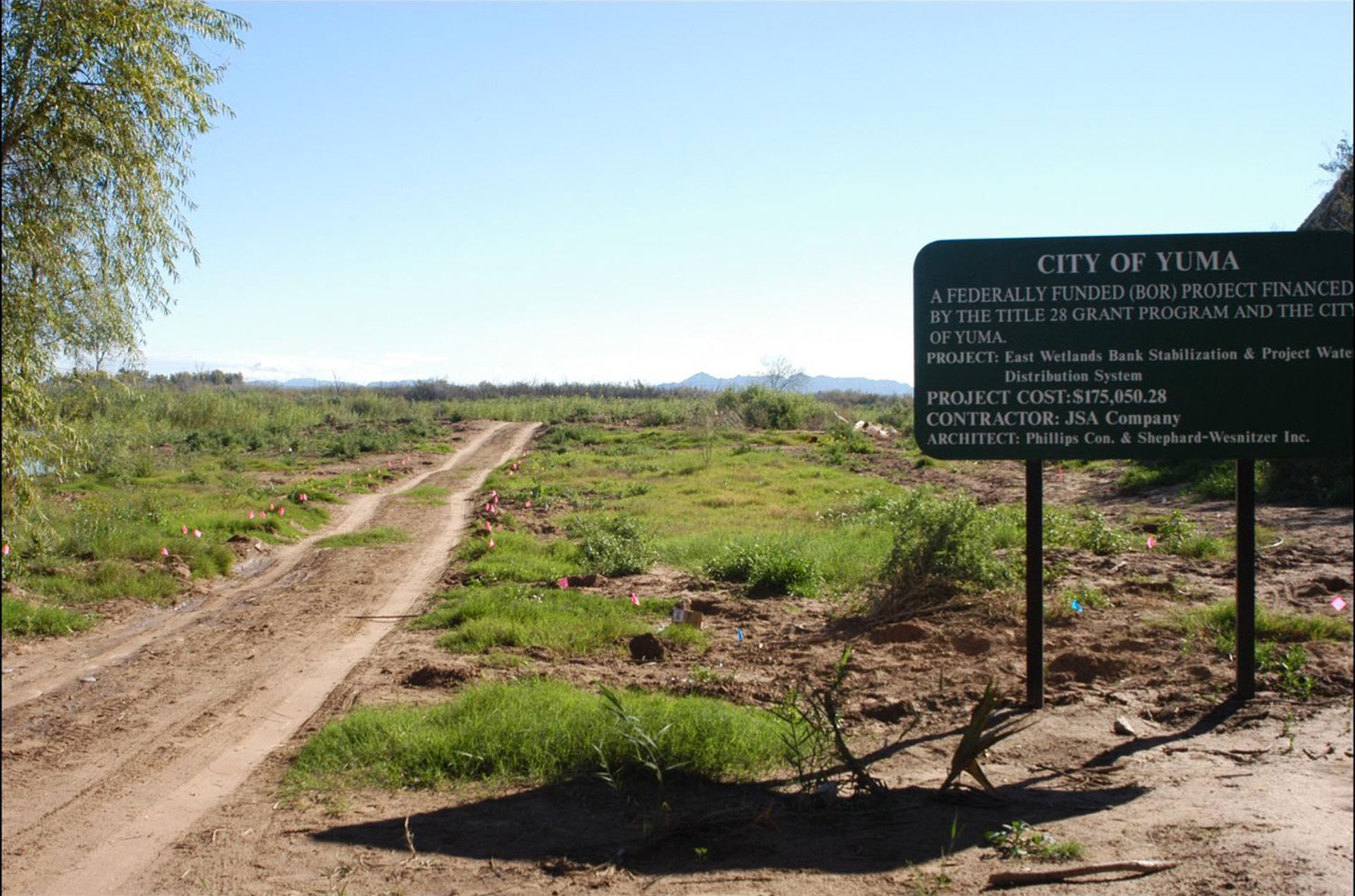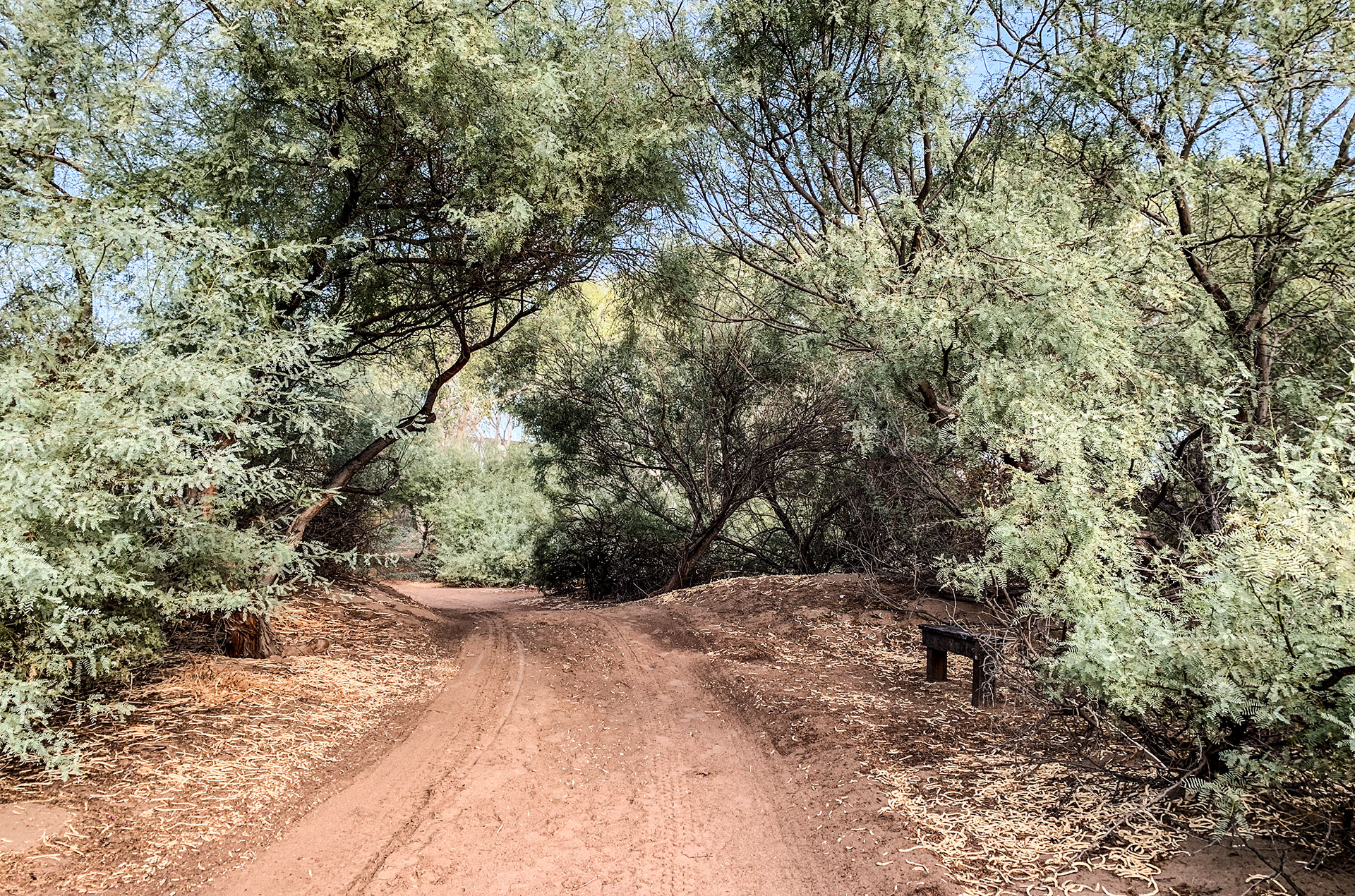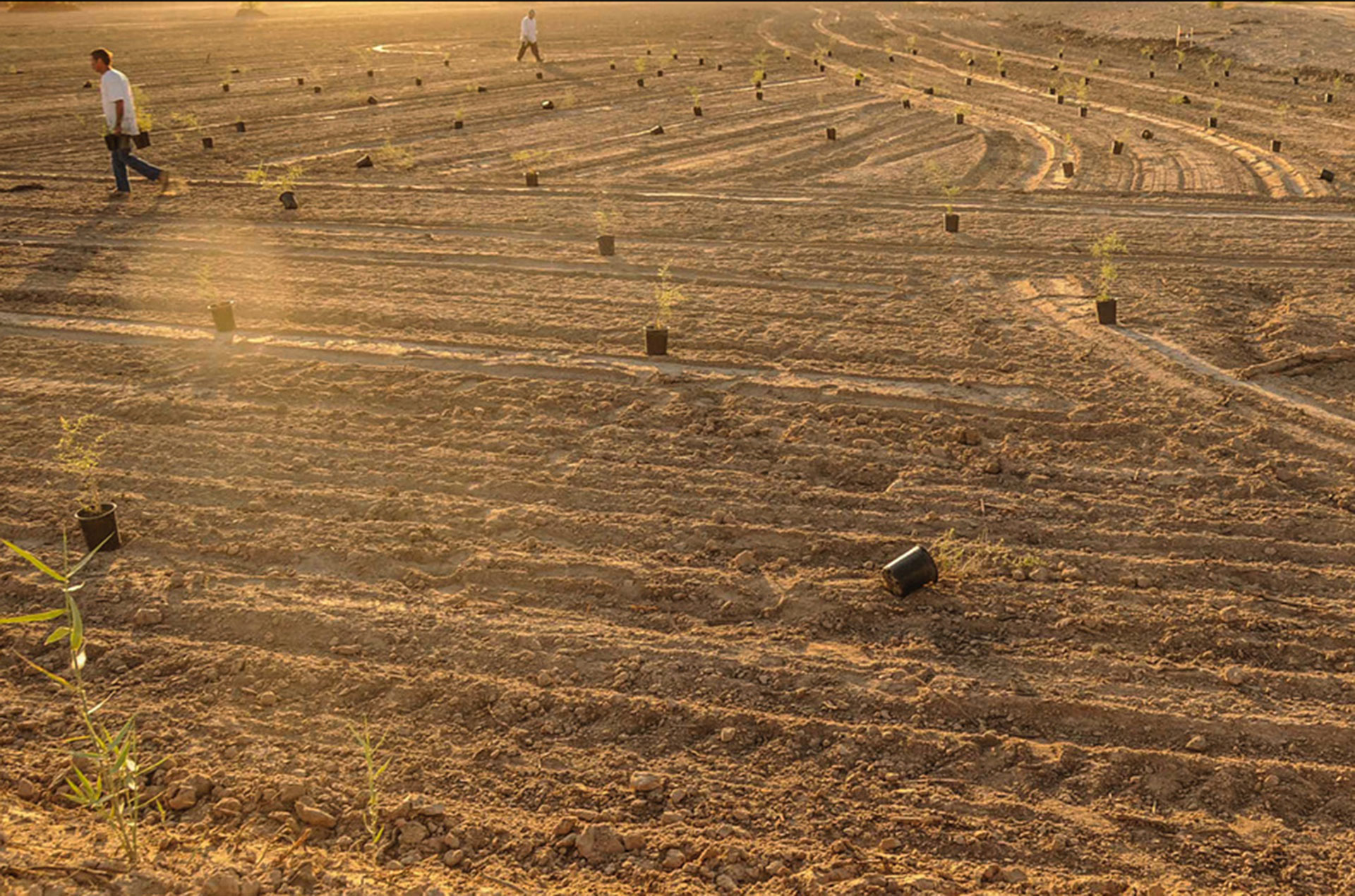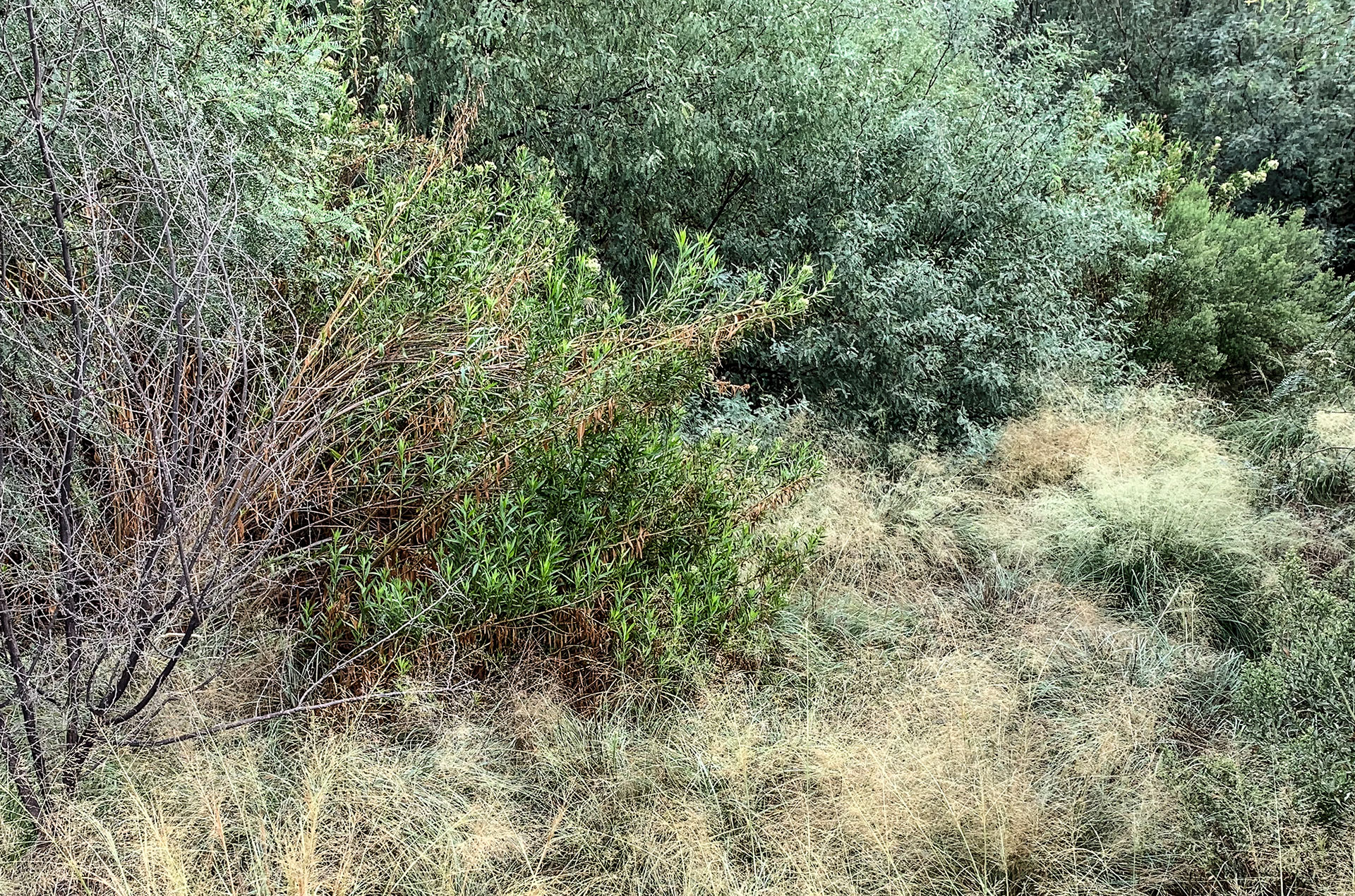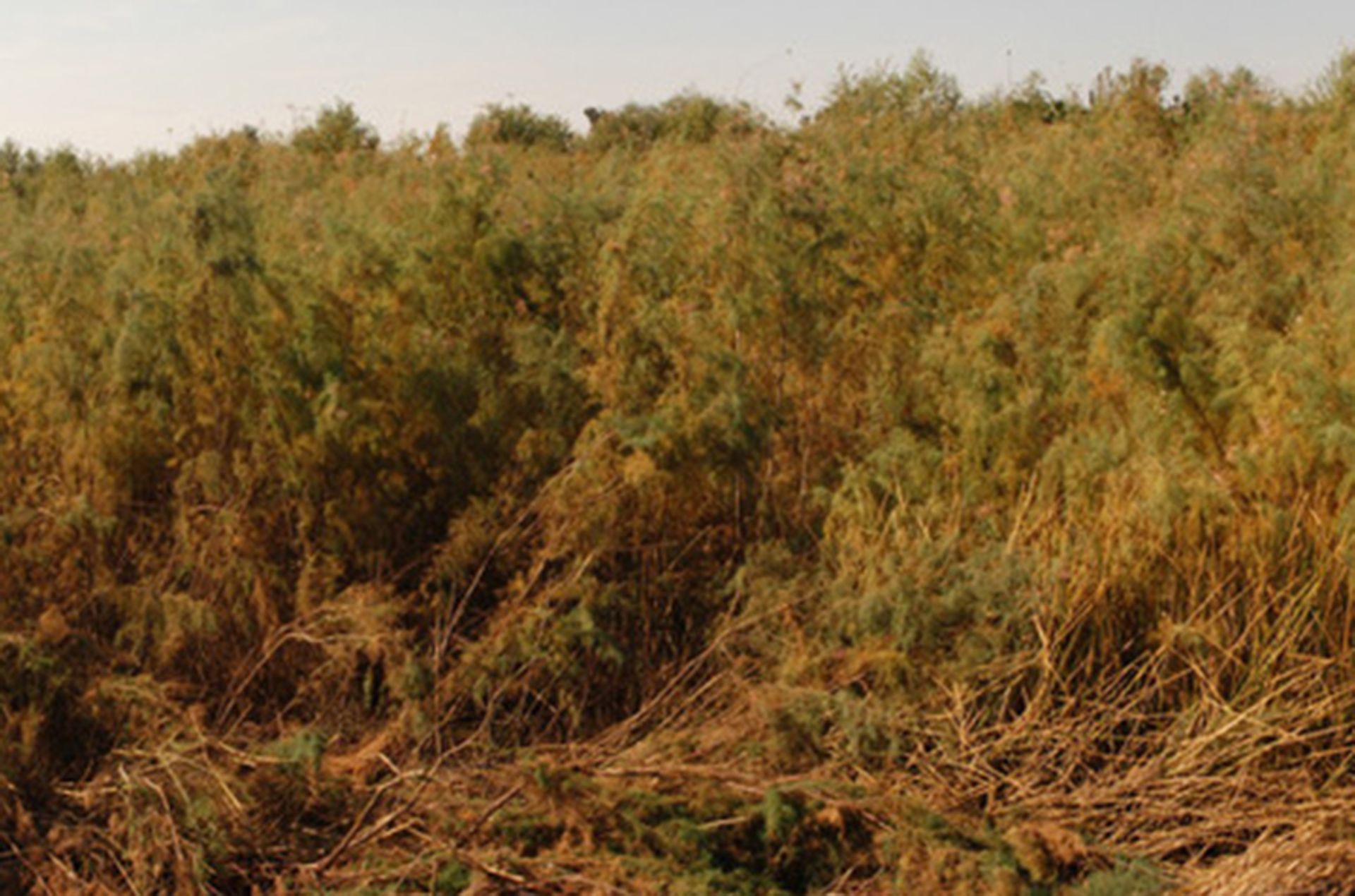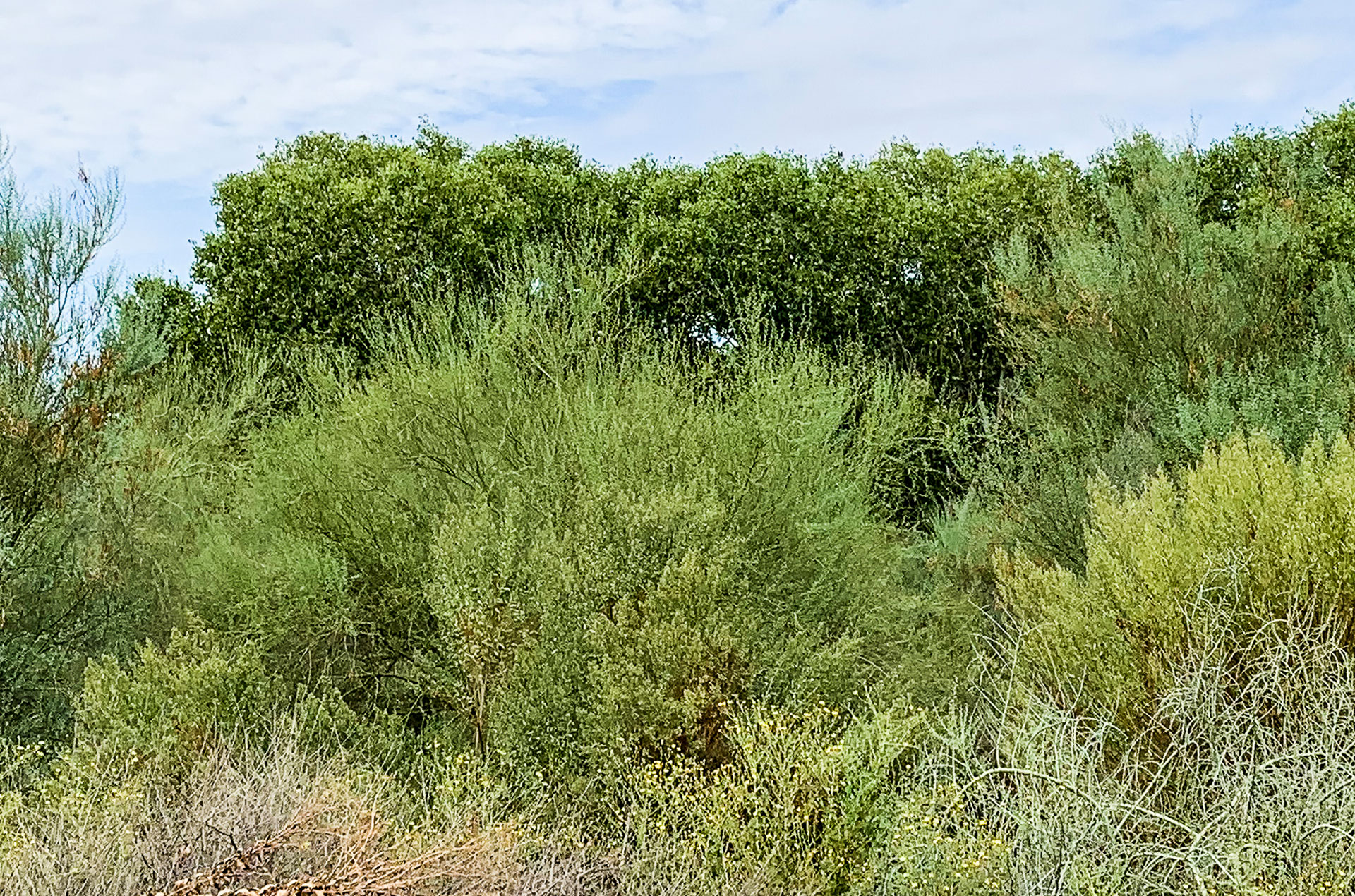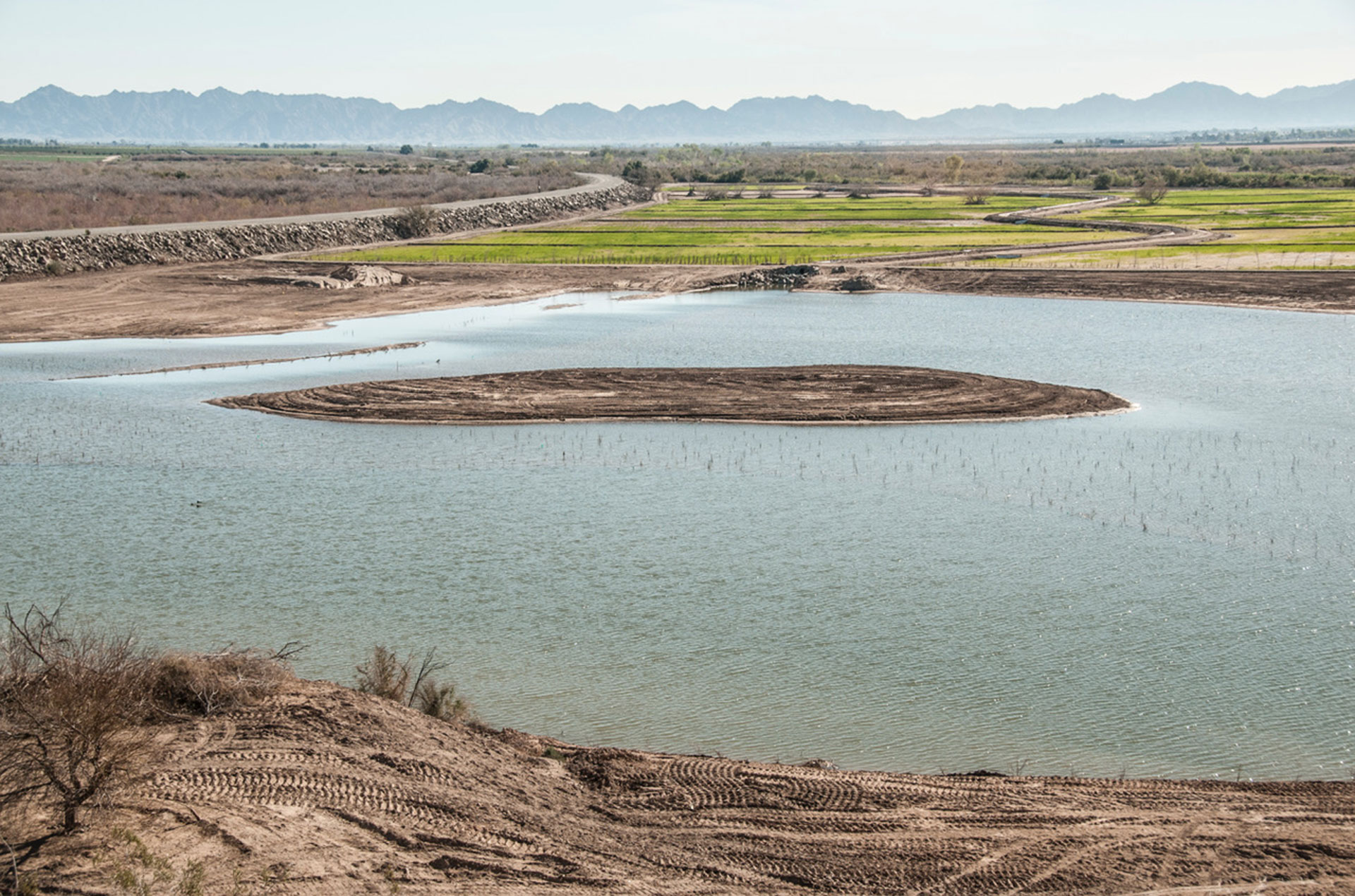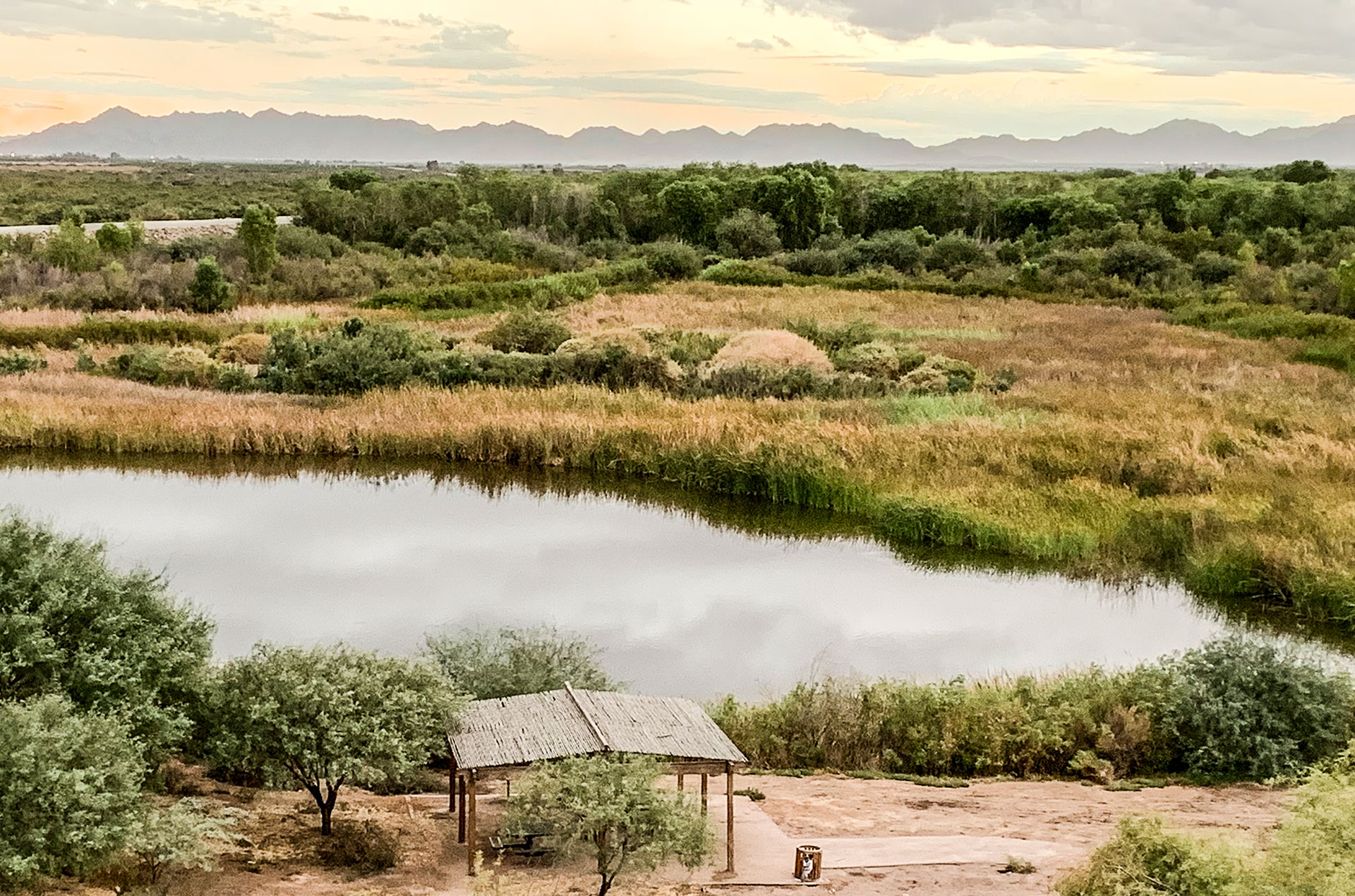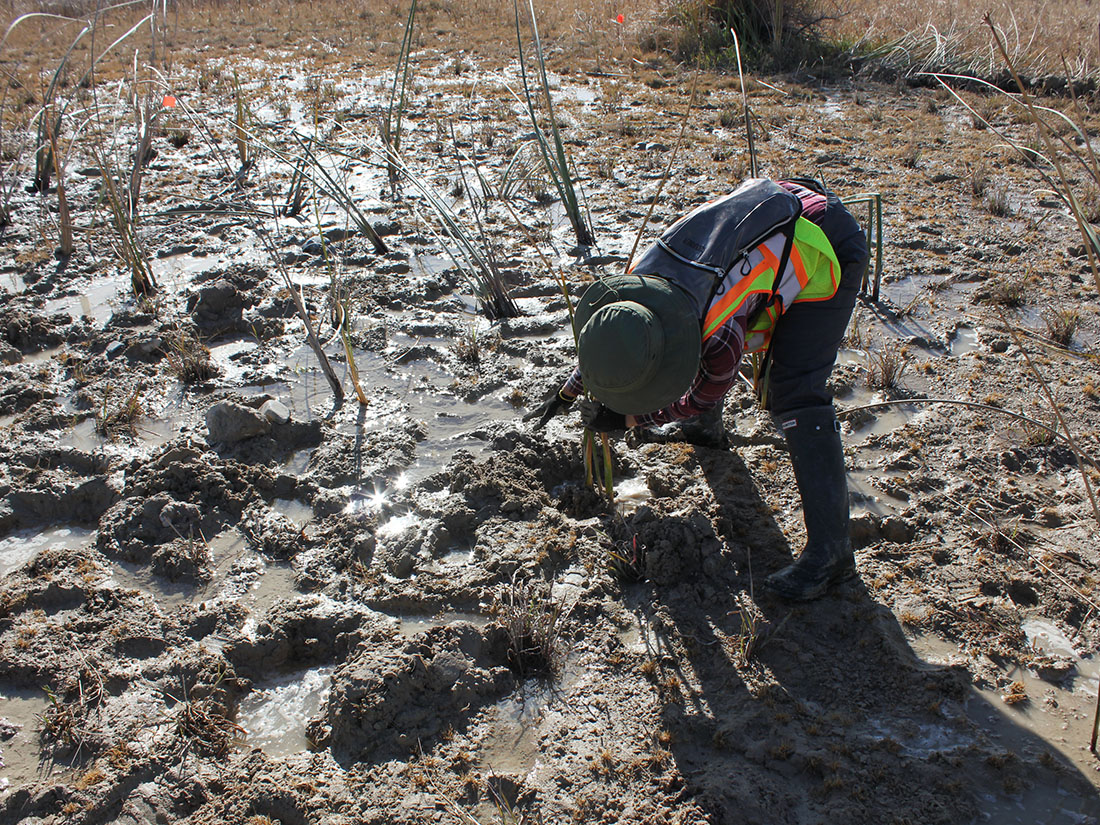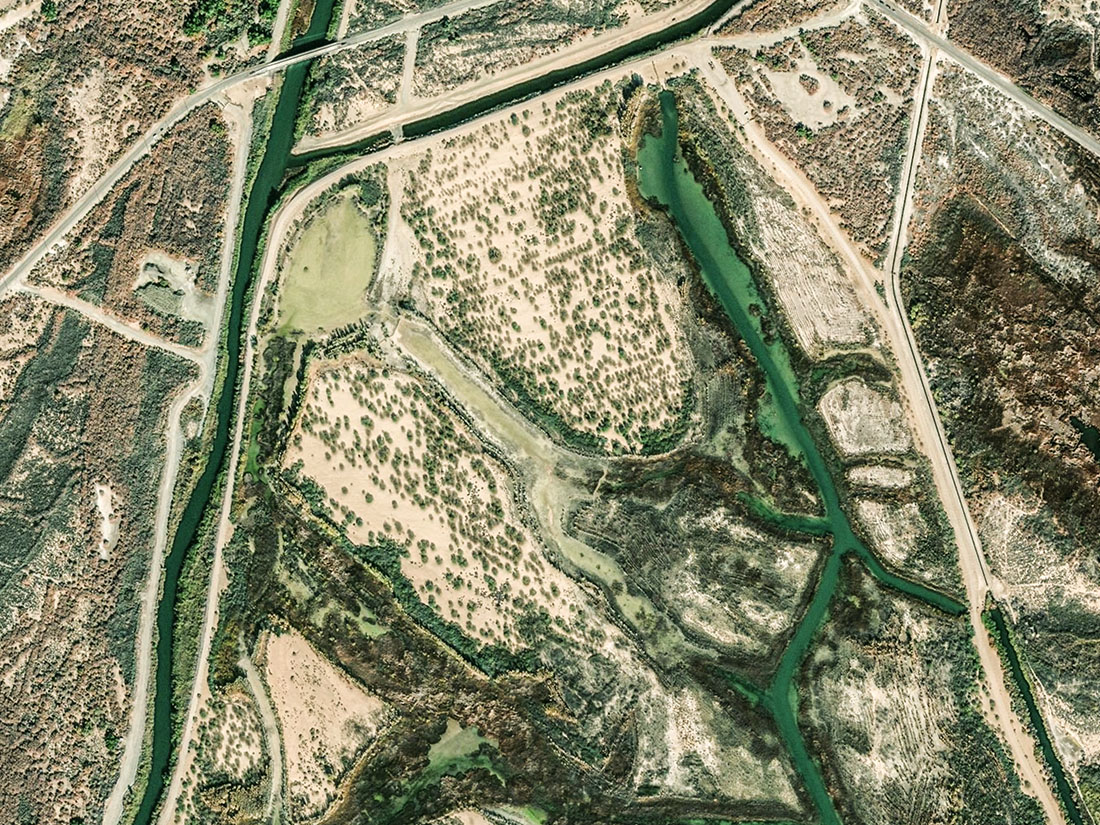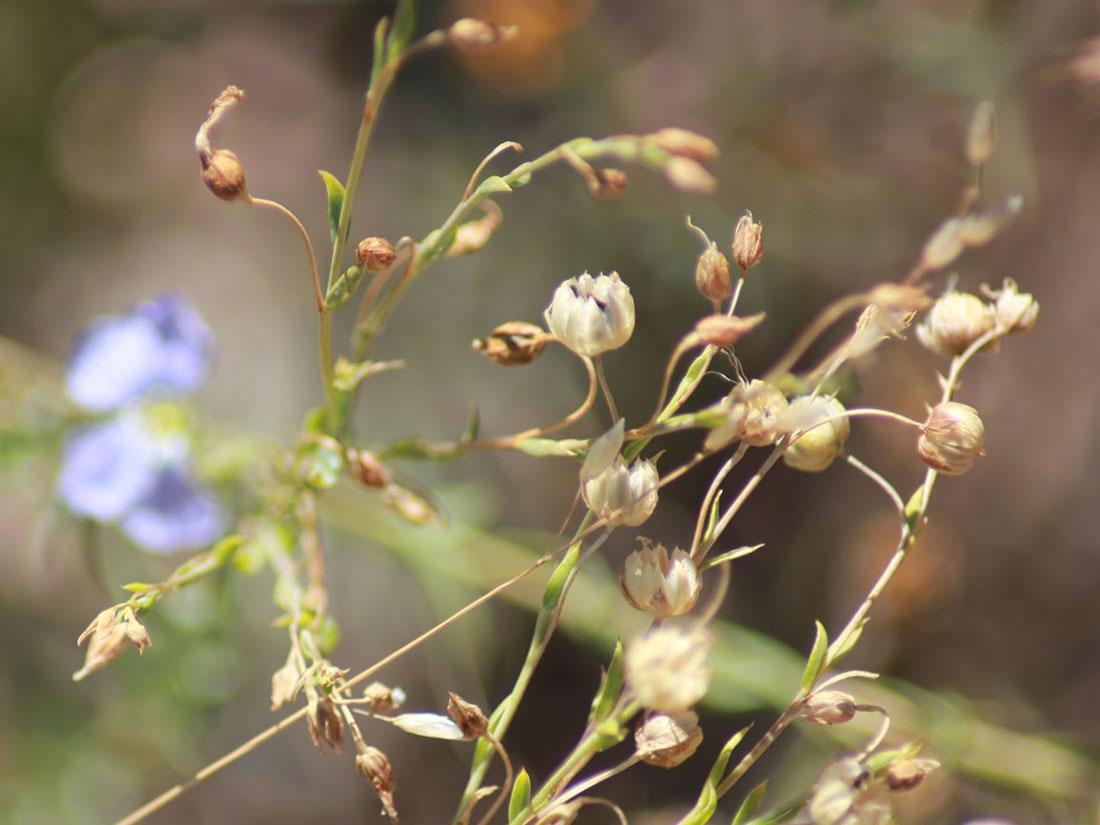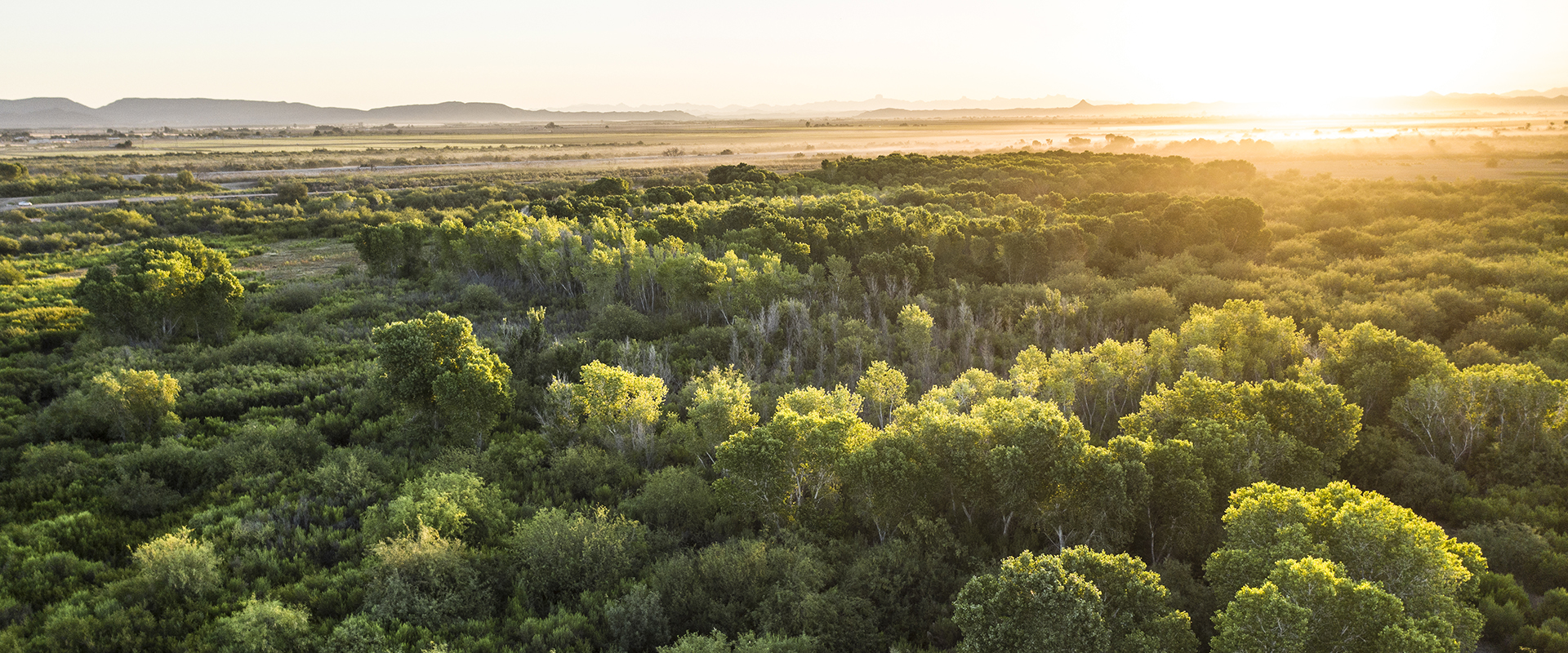
About This Project
Prior to restoration activities, the 1,400-acre Yuma East Wetlands (YEW), located along the furthest stretches of the lower Colorado River, was one of the most ecologically altered wetland landscapes of the Southwest. Damage to the river was due to nearly a century of flow regulation, channelization, non-native species invasion, deforestation, and wildfires. Thickets of dense, monoculture invasive salt cedar and phragmites dominated the site, compromising its ecologic integrity and causing a steep decline in plant and wildlife diversity. This area was also overrun with crime, trash dumps, and meth labs—ignored and feared by the local community for decades. Local police avoided the area due to its danger. During a site visit, former Arizona Governor and Department of the Interior Secretary Bruce Babbit remarked that he did not think that large-scale restoration of this area was ever possible.
Fred Phillips Consulting served as the design and implementation team to develop the Yuma East Wetlands Restoration Master Plan. To accomplish this task, our firm: Organized and facilitated stakeholder consensus meetings between 16 different landowners; conducted the initial biological investigations and site analyses, including vegetation mapping, soil analysis, wetland delineation, and topographical surveys; completed the environmental compliance permitting and planning process (Clean Water Act Section 404, State Historic Preservation Office, wetland delineation); and created the restoration design.
Beautiful Yuma, 5 Minute Video of Yuma’s Amazing Riverfront transformation
Project Slide Show
For over twenty years, we have performed construction observation and oversight, vegetation monitoring, endangered species surveys, and overall project coordination. The firm helped secure more than $10 million dollars in grant funding for the project. The Lower Colorado River Multi-Species Conservation Program (LCR MSCP) is now supporting the long- term maintenance of the project. Many threatened and endangered species, including the Yuma clapper rail, yellow billed cuckoo, California leaf-nosed bat, and Yuma hispid cotton rat have returned to this site.
Just as importantly, the communities surrounding the river—Native American, Anglo, and Hispanic—have reconnected with this restored riverfront and now strongly cherish it. Retired Yuma Heritage Area Director Charles Flynn said of Phillips: “ It took his creativity, relentless drive, and ability to adapt to conditions on the ground to accomplish this miracle in the desert.”
“Fred Phillips did the impossible, taking on wetlands restoration in the most challenging conditions in the United States. ‘Experts’ told us that the soil salinity and lack of water flow made the Yuma East Wetlands a non-starter. Fred proved them all wrong, completing 400 acres of restoration. In some ways, the greater challenge was getting the stakeholders—farmers, the Quechan Indian Tribe, and the City of Yuma—to all agree to support a consensus restoration plan. Fred got them to work together. If you want great wetlands design based on real, on the ground experience, Fred Phillips is the consultant to use.”
– Charlie Flynn, Executive Director Yuma Crossing National Heritage Area (1999-2018)
Before and After
Additional information
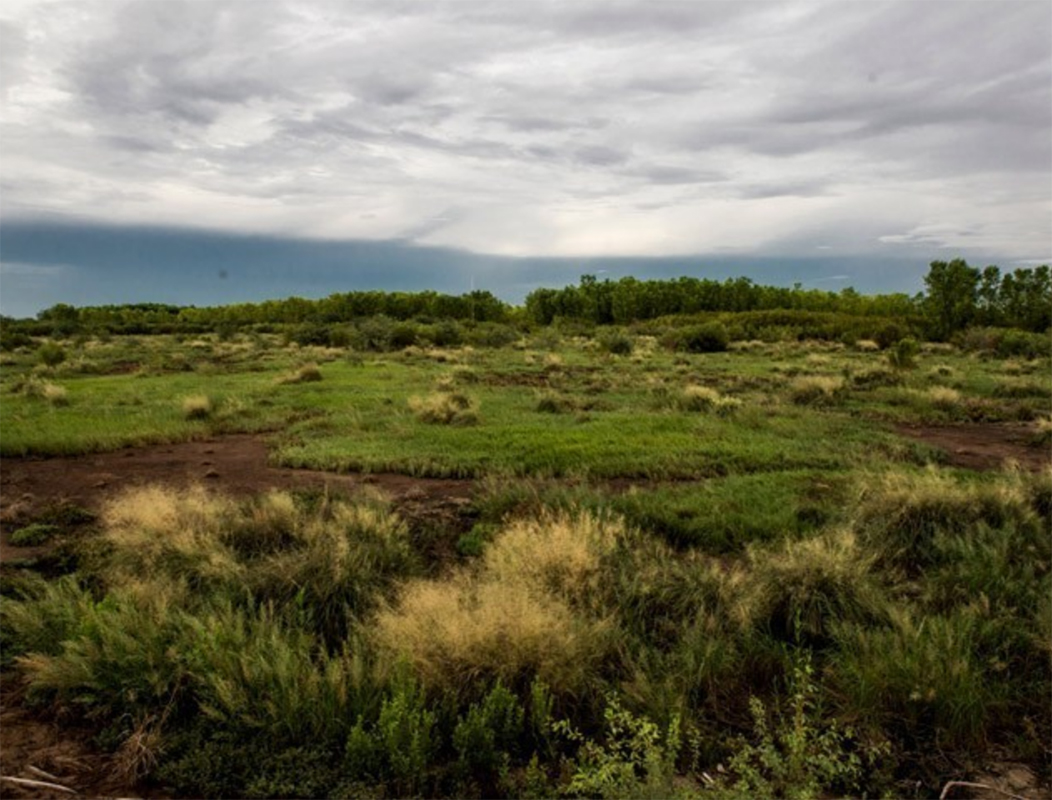
Yuma East Wetlands, Phases 1 and 2
Case Study

Rivers as Economic Engines
Open PDF
Client
Yuma Crossing National Heritage Area, Quechan Indian Tribe
Location / Date
Yuma, Arizona / 1999-2020
Collaborators
Doug Mellon Farms, Bureau of Land Management, Bureau of Reclamation, Arizona Game and Fish Department, United States Fish and Wildlife Service, Natural Channel Design, PG&E

